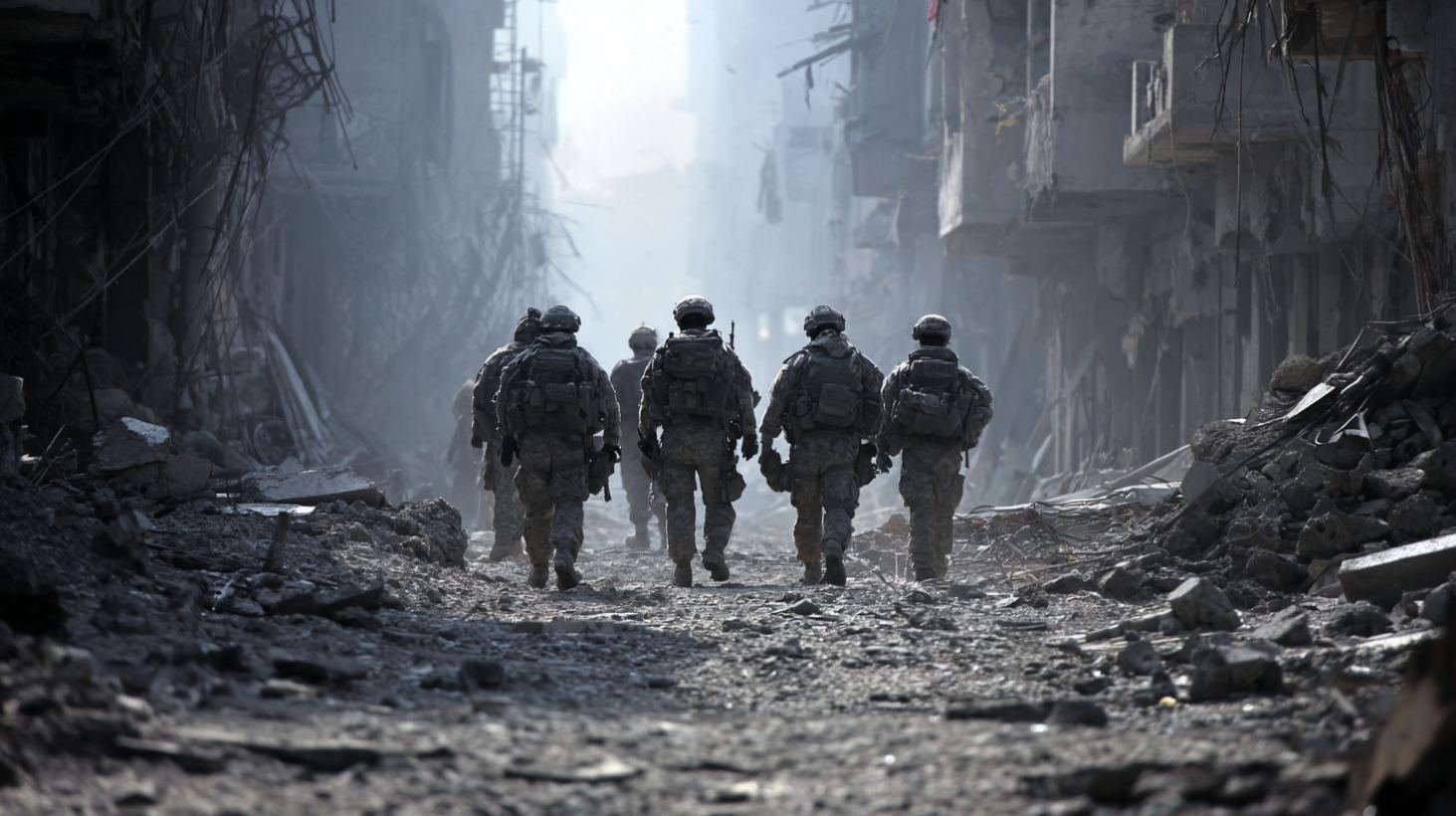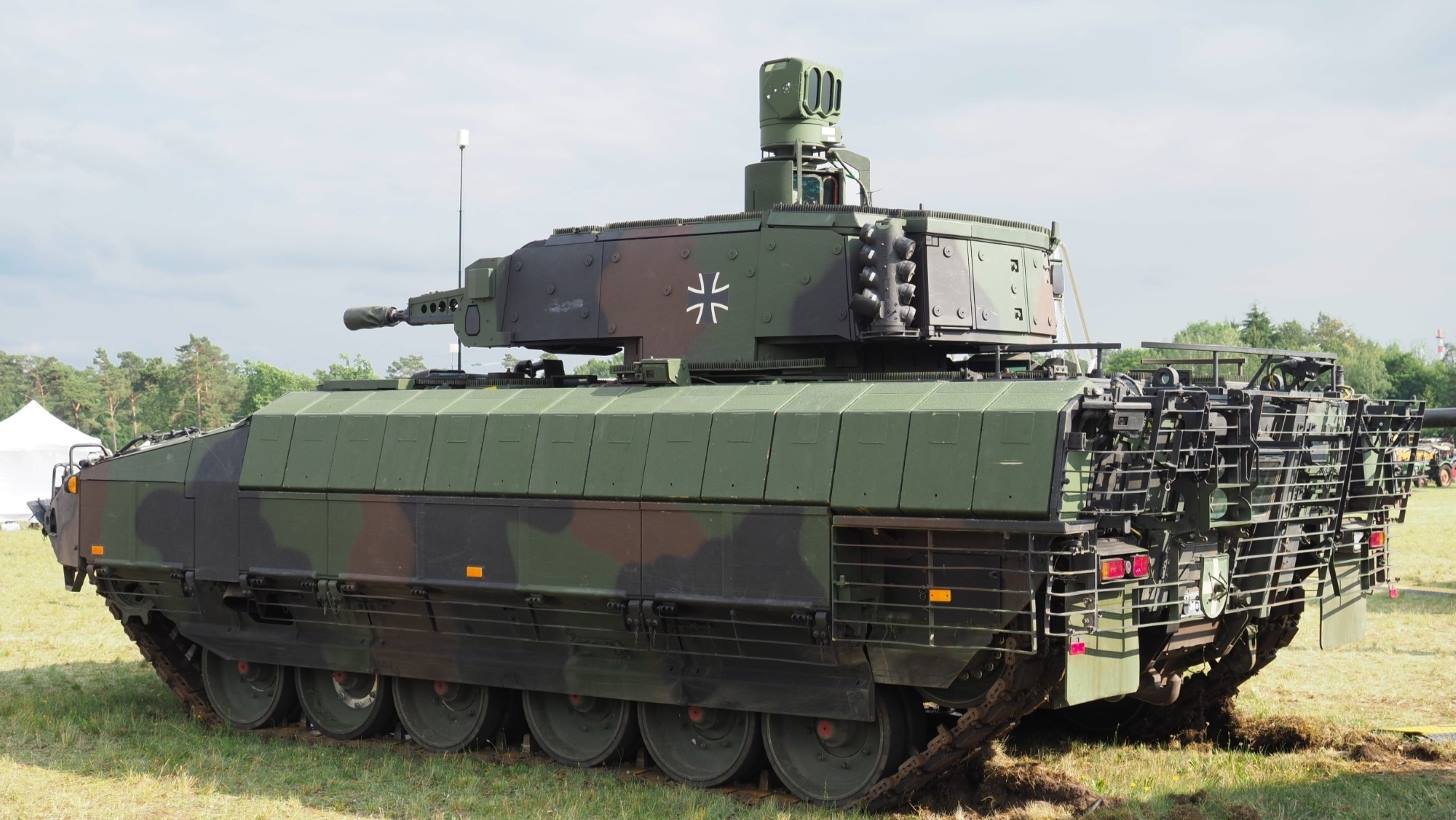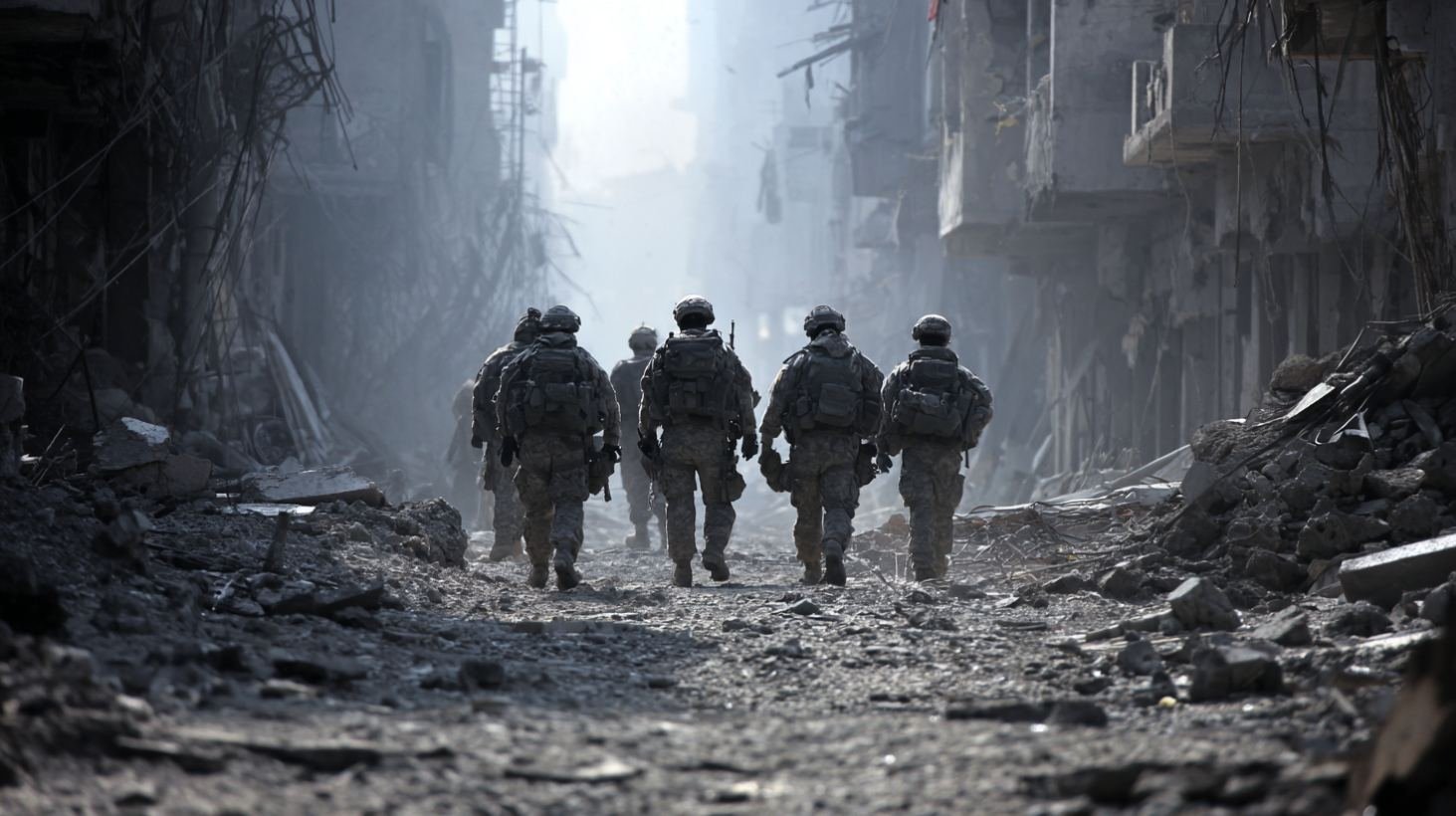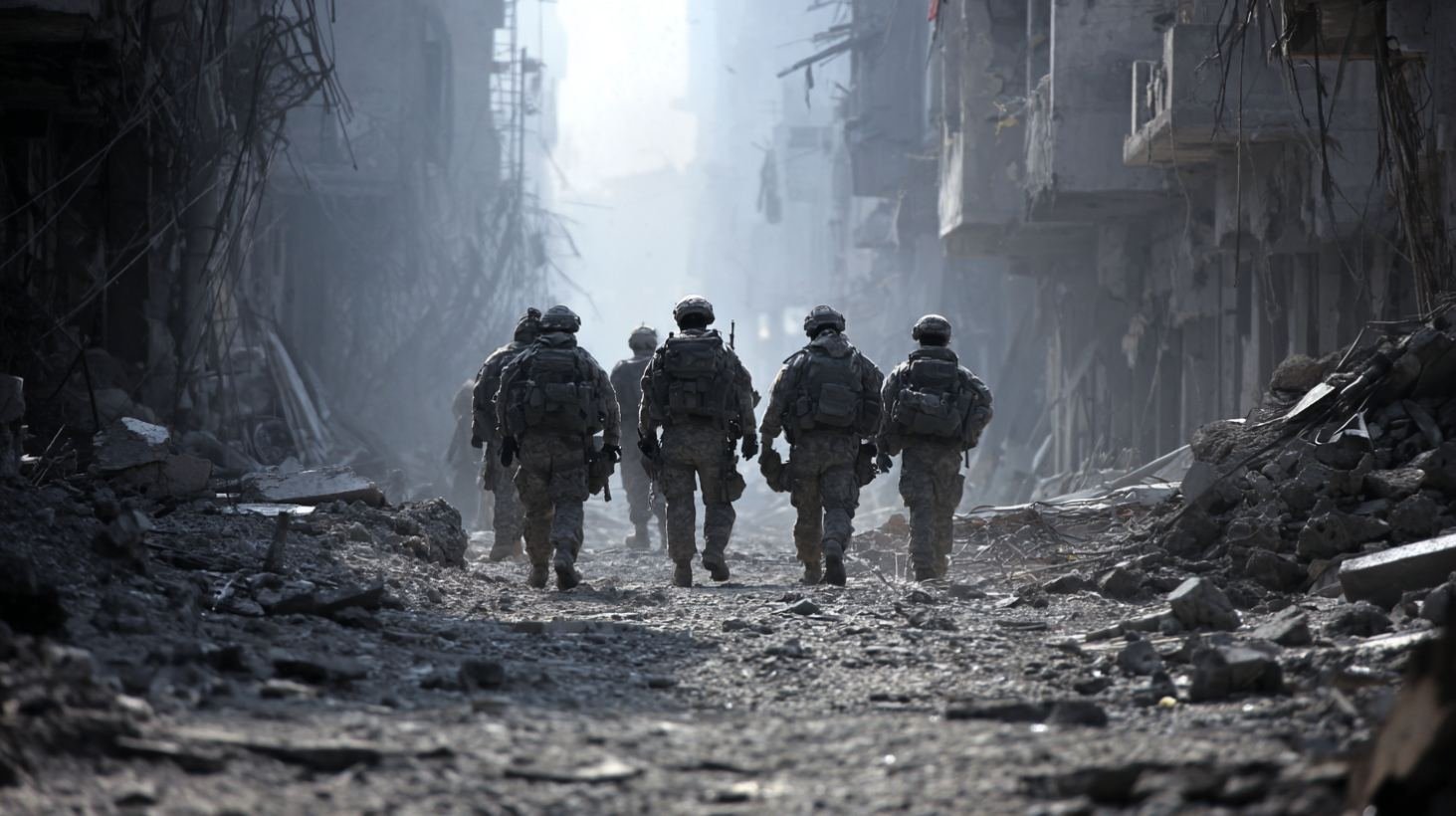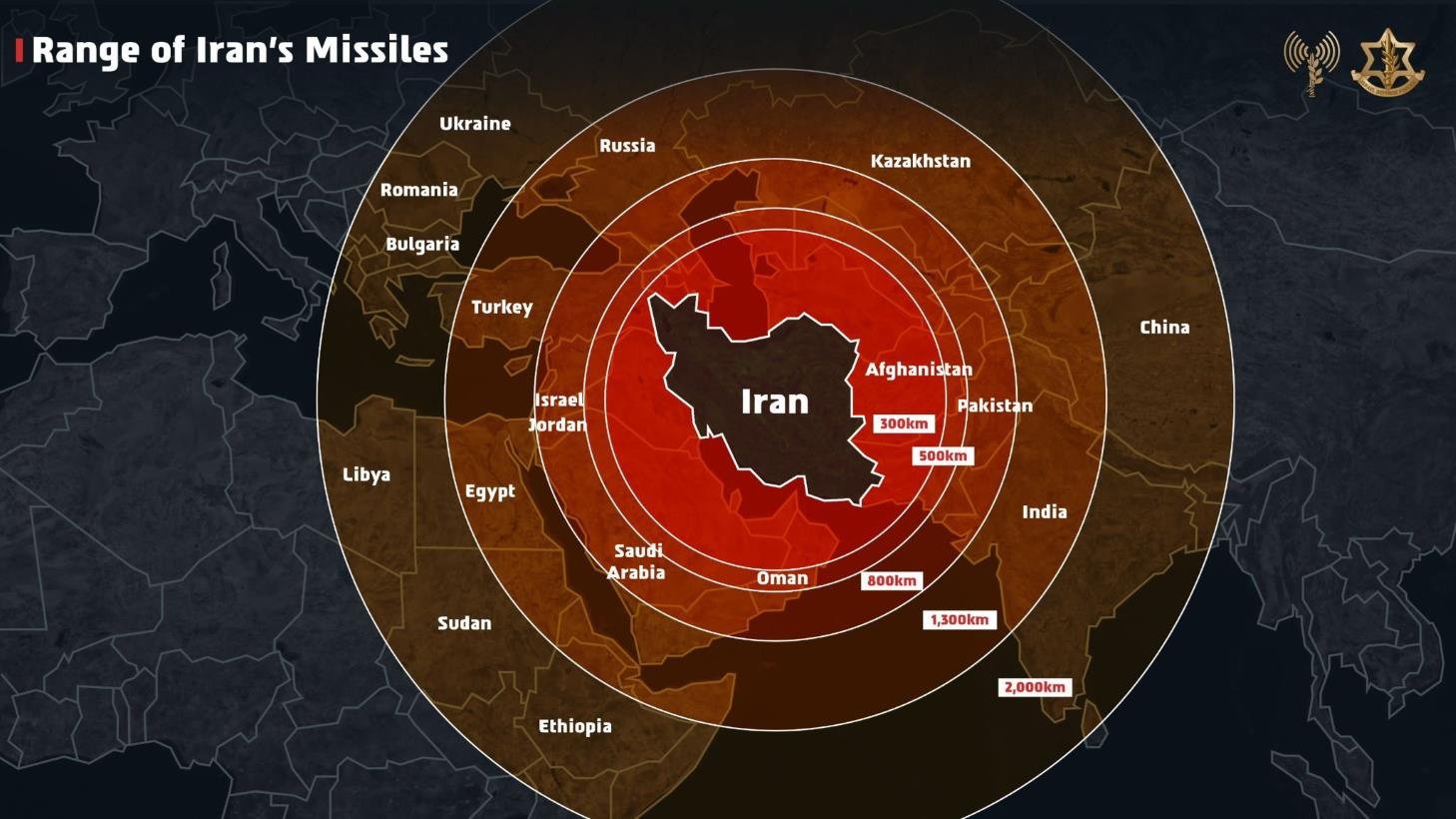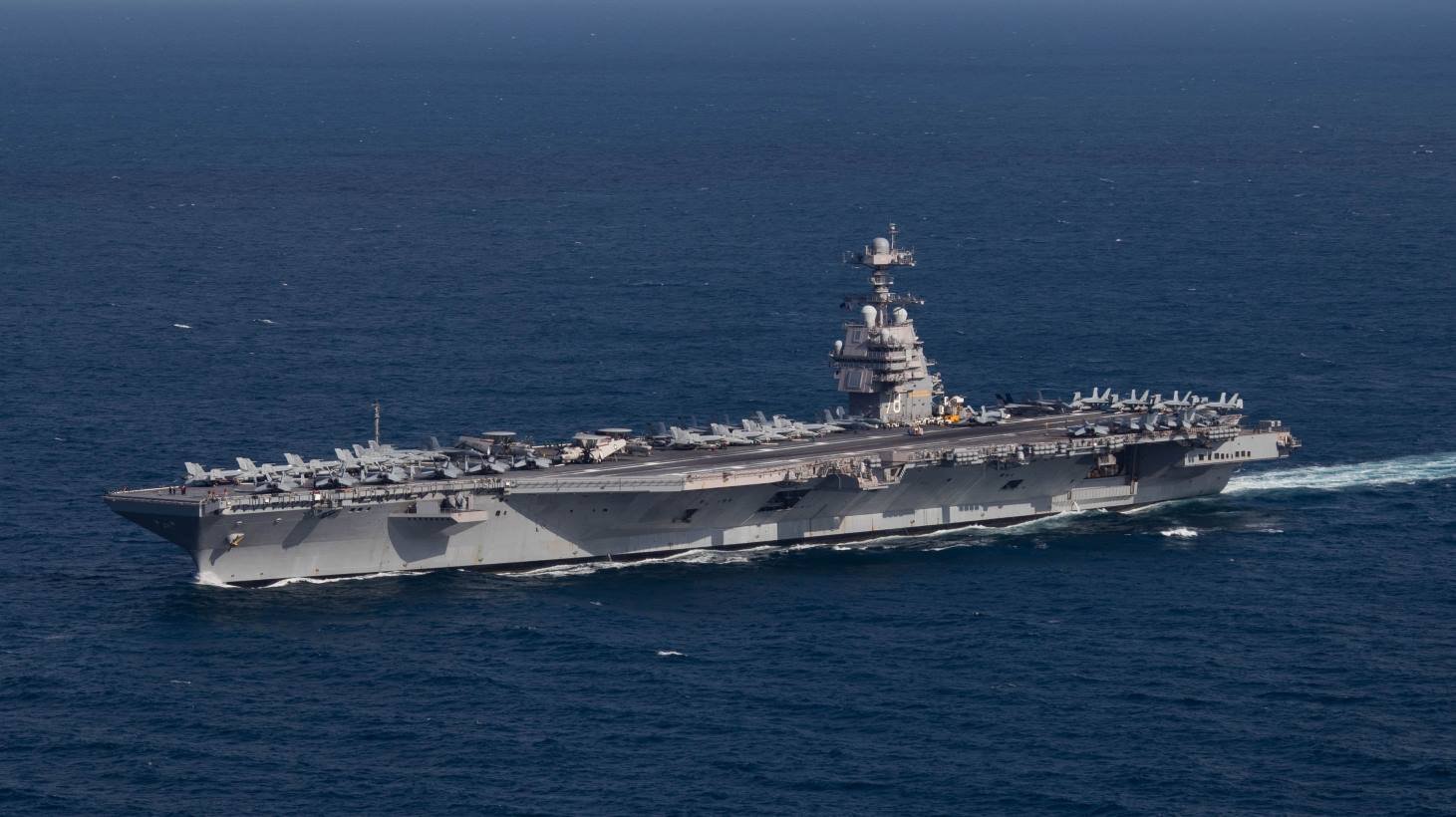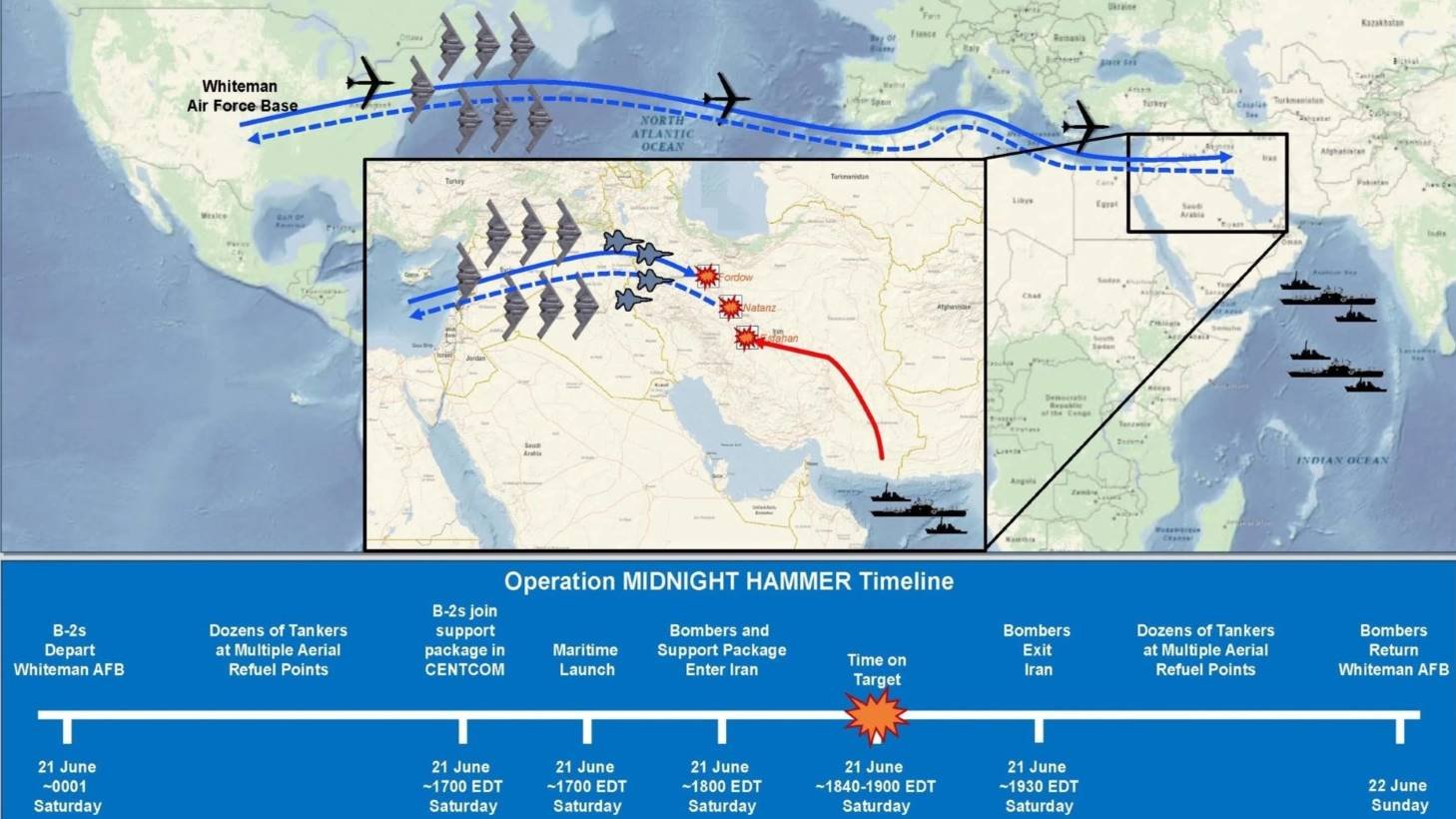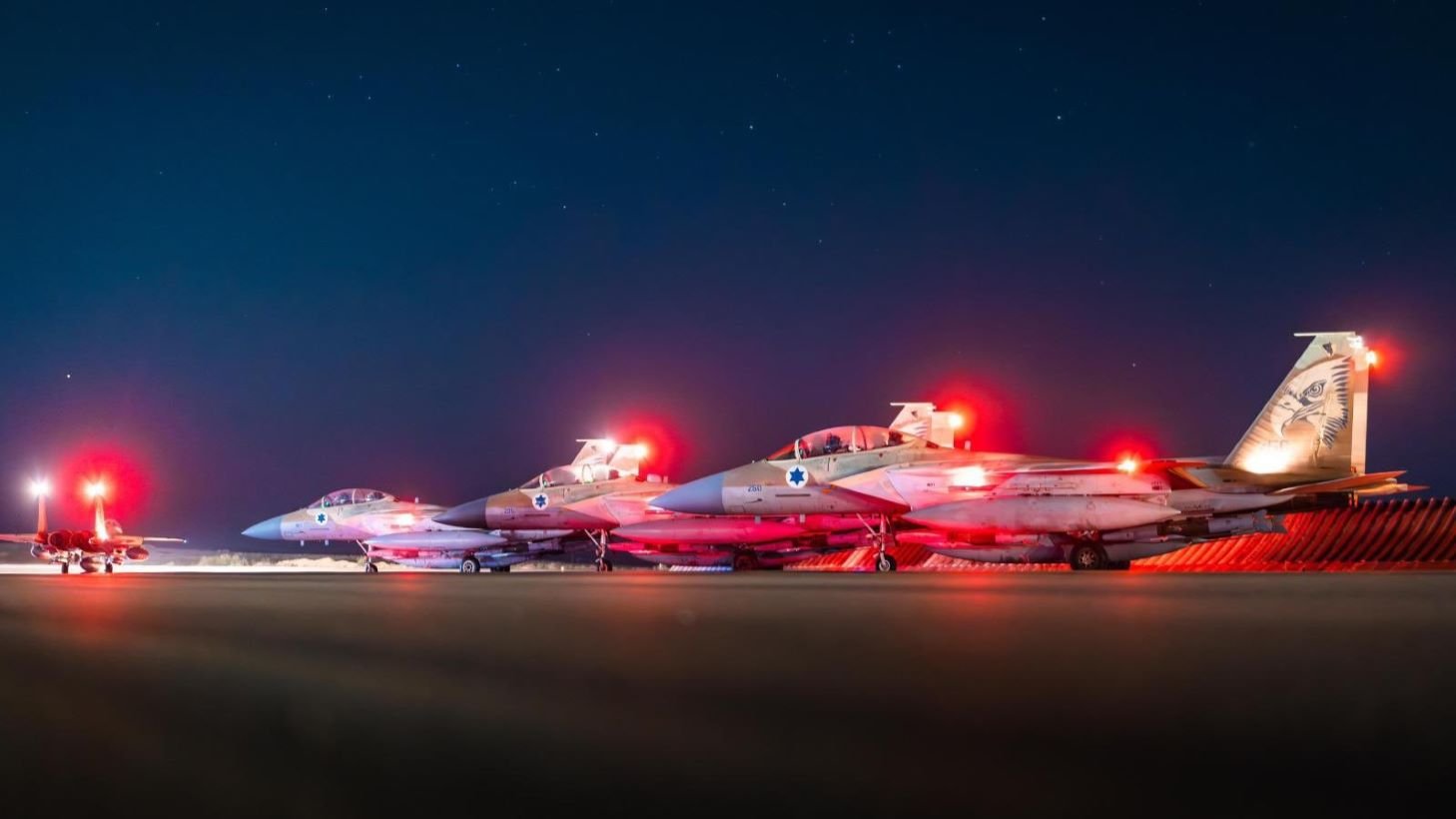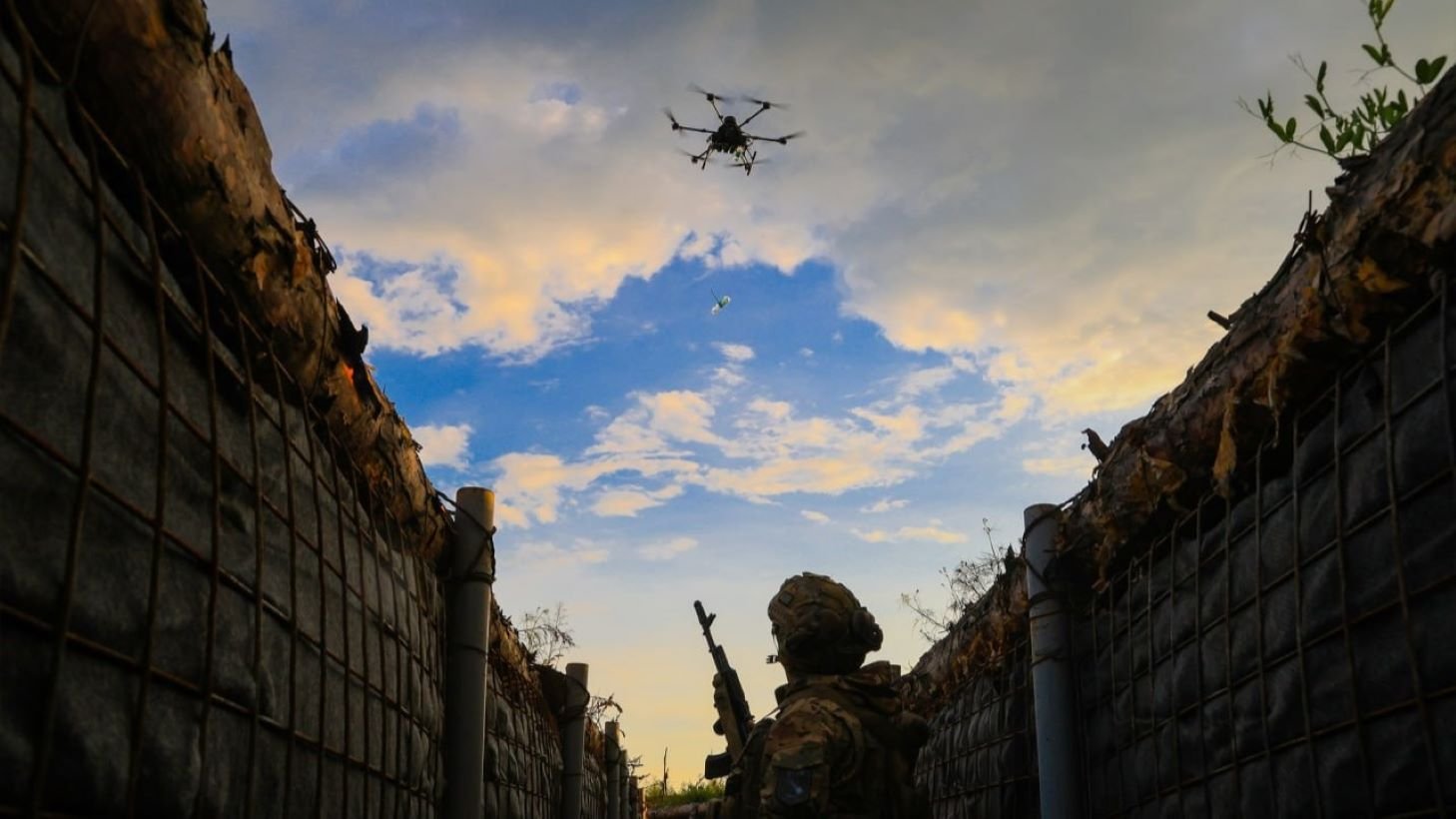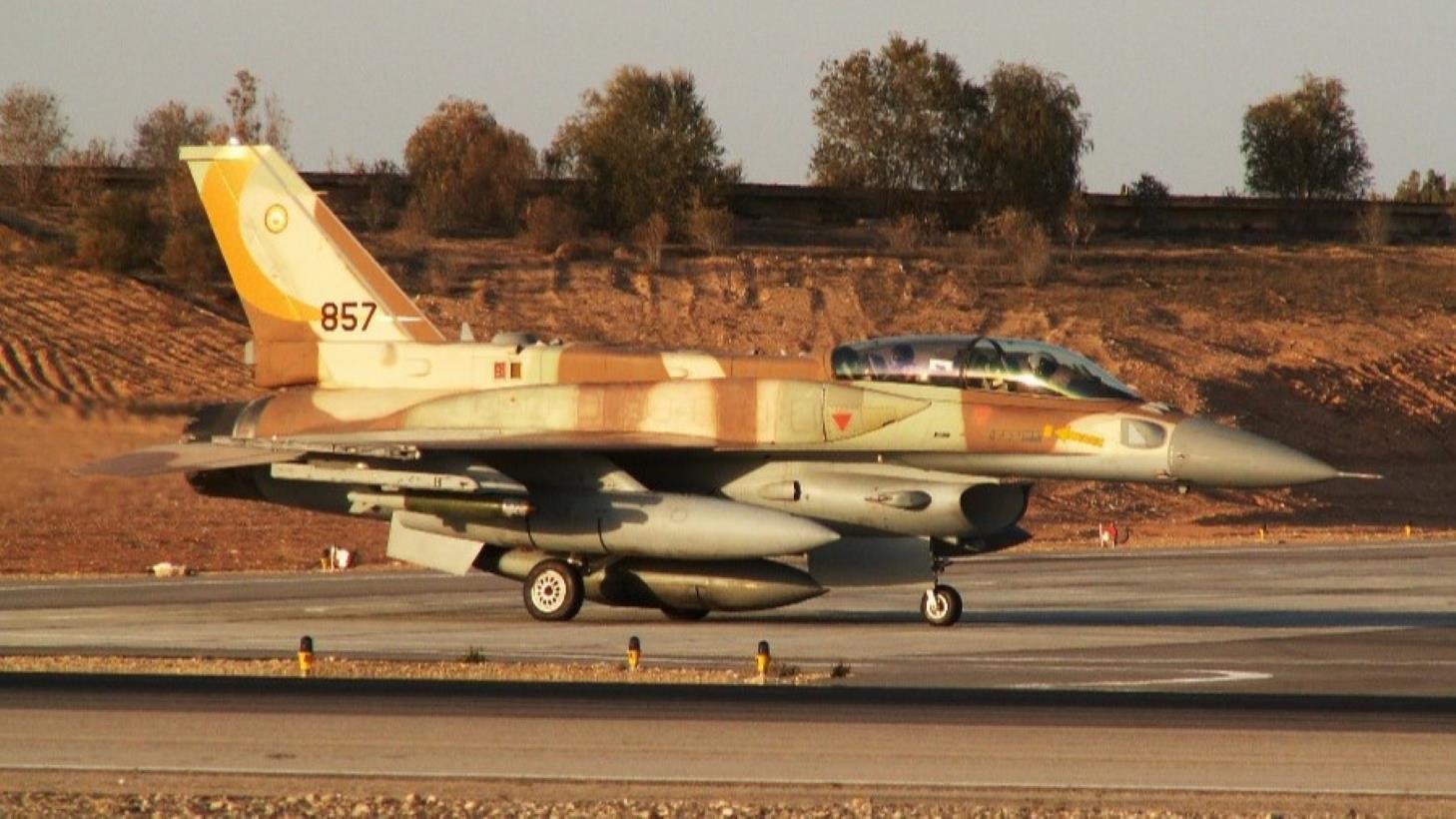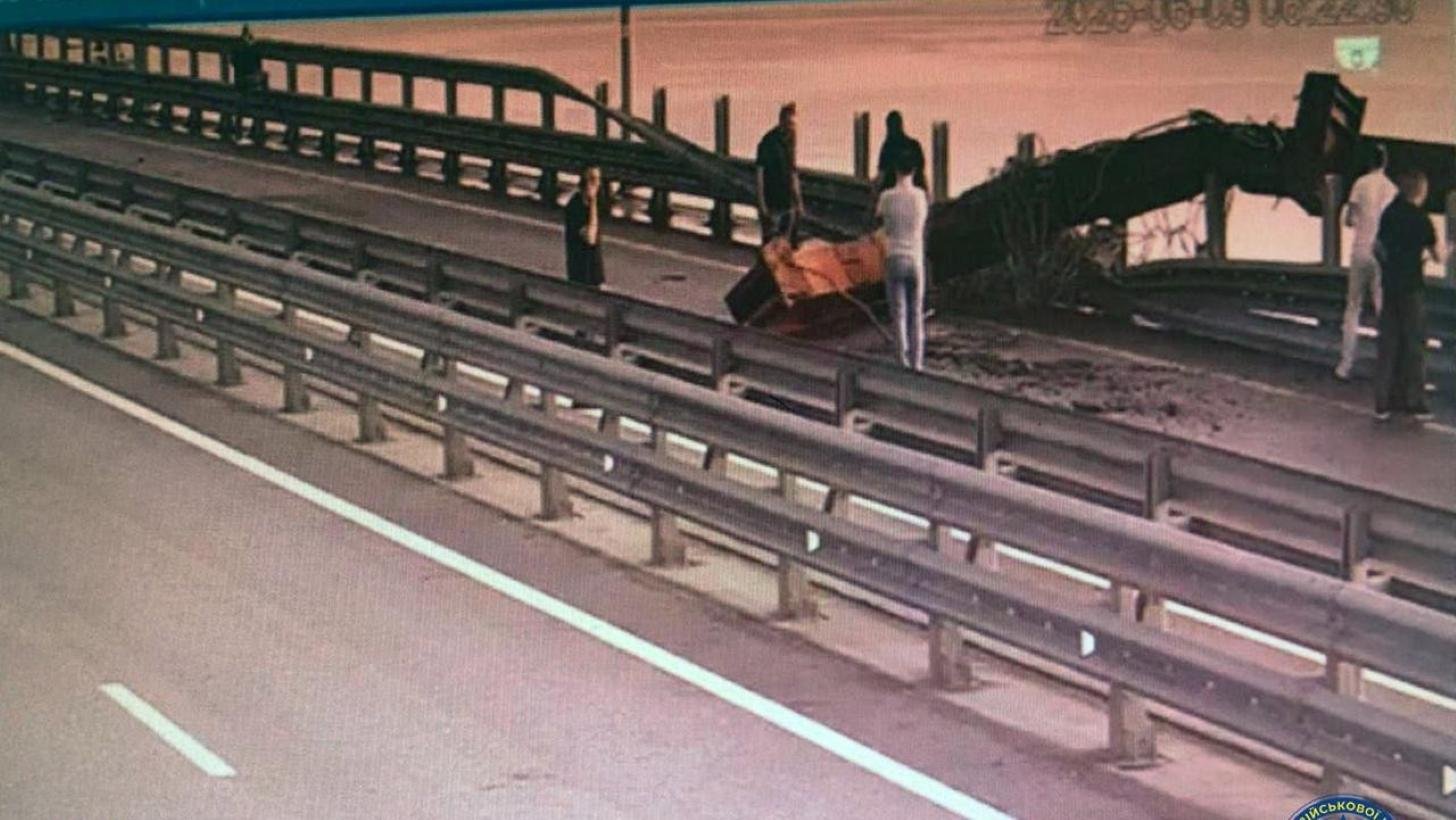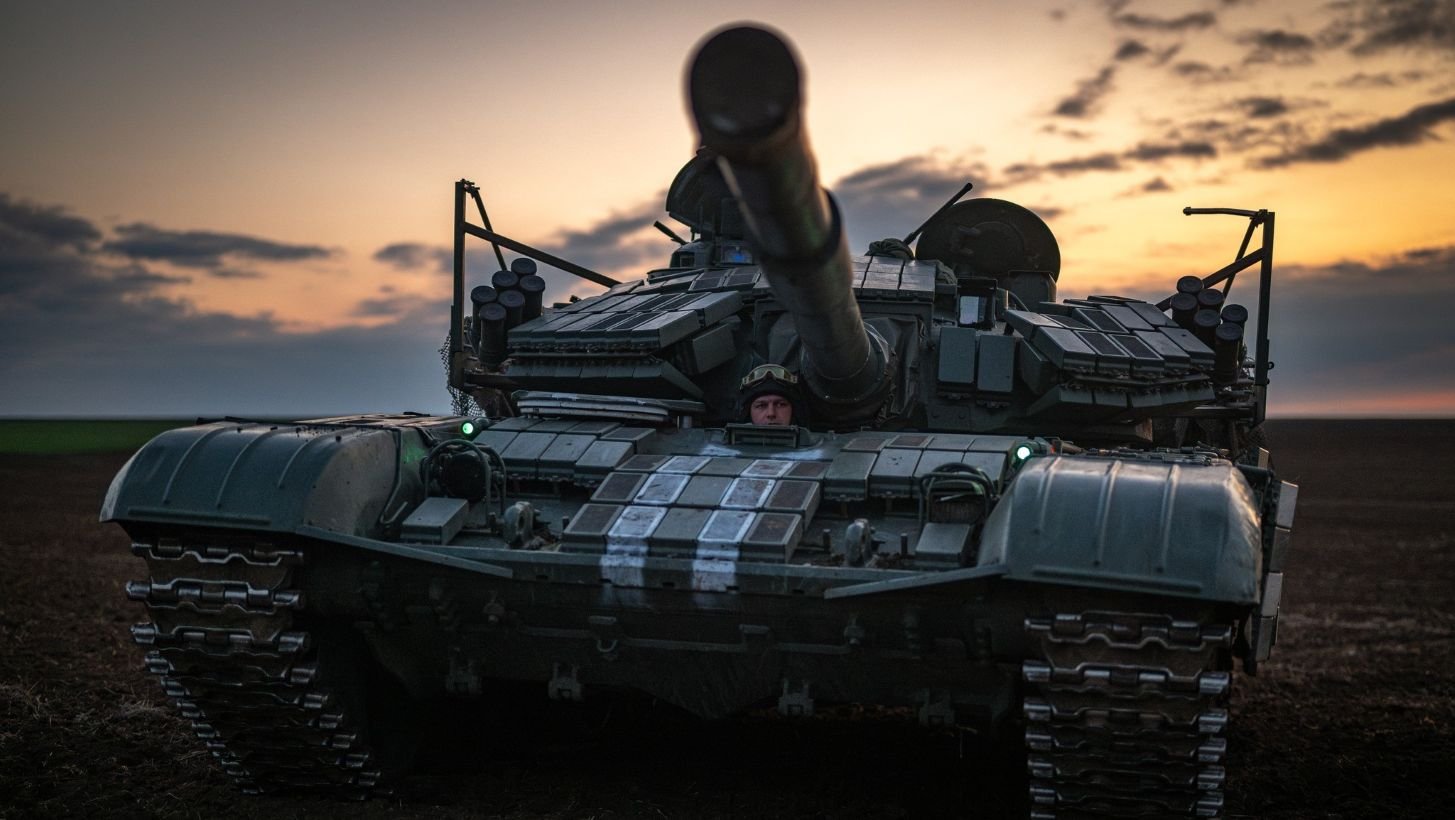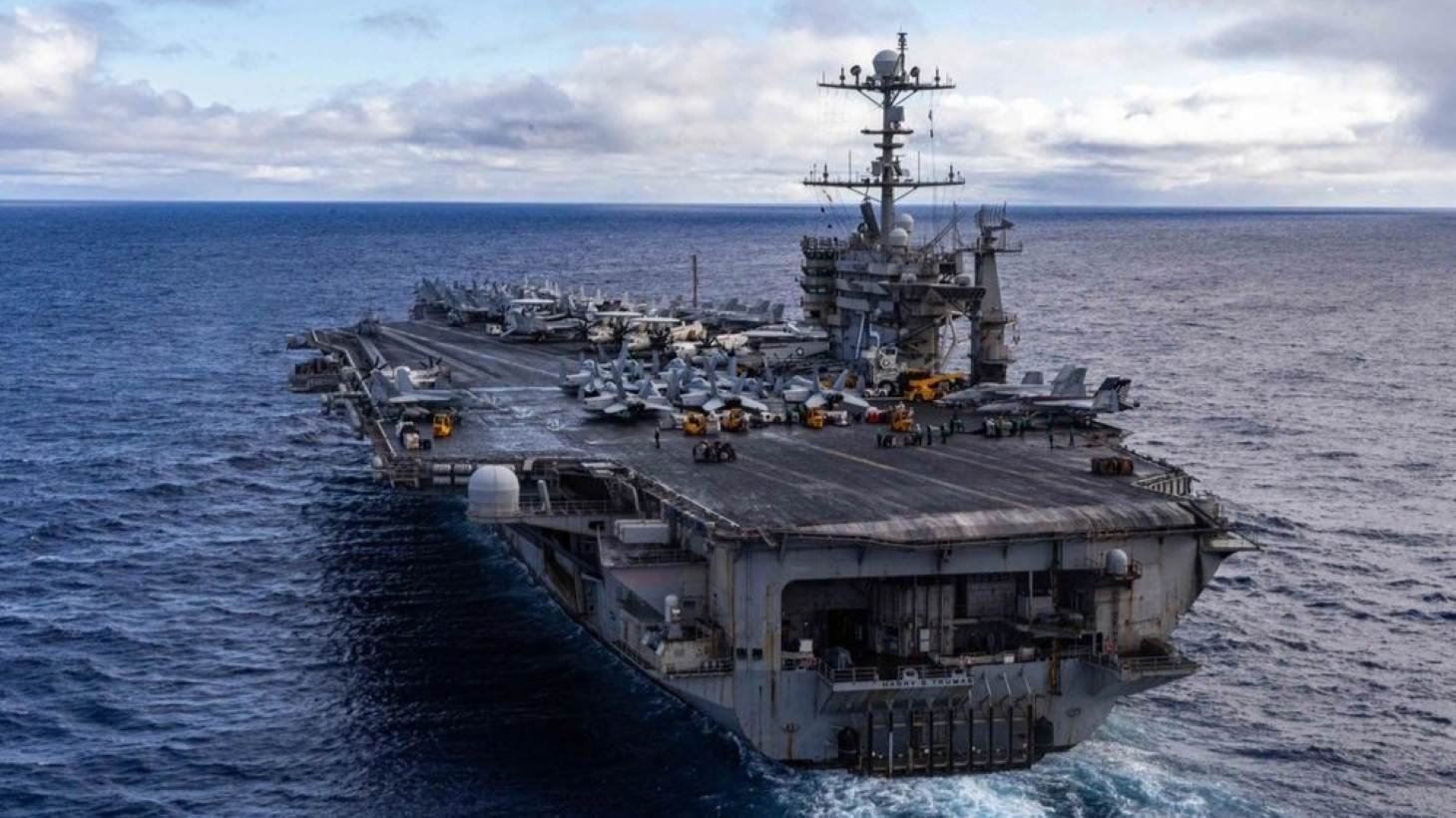-
Posts
790 -
Joined
-
Last visited
Content Type
Profiles
Uncrowned Armory News
Prepping Cookbook
Conspiracy Theories
Uncrowned Tactical Sports News
Prepping
Forums
Events
Everything posted by Uncrowned Guard
-
Escalating Violence in Major Conflict Zones Over the past week, several long-standing hotspots have experienced renewed violence, underscoring the persistent instability worldwide. In Ukraine, Russian missile strikes targeted key infrastructure in multiple cities, leading to significant civilian casualties and power outages. Ukrainian forces responded with cross-border drone operations and counteroffensives near the eastern front, yet neither side has gained decisive momentum. Meanwhile, Israel and Gaza remain locked in intense clashes. Israeli airstrikes and ground operations continued amid ongoing regional tensions, with diplomatic efforts to broker a ceasefire yielding little progress. Civilians in both regions bear the brunt of the violence, with humanitarian agencies struggling to provide relief amid restricted access. Undercurrents in Africa and the Middle East In Sudan, fierce battles between the Sudanese military and the Rapid Support Forces (RSF) erupted in key urban centers, notably Omdurman and parts of Darfur. Thousands of civilians have fled renewed fighting, as reports of atrocities and targeted attacks increased. Sudan's conflict, now stretching into its second year, risks causing broader regional instability. In Yemen, sporadic clashes flared between Houthi rebels and government-aligned forces, disrupting a fragile de-escalation. Houthi attacks on international shipping through the Red Sea contributed to global trade disruptions, drawing condemnation but little concrete intervention. Asia-Pacific Tensions and Civil Unrest Myanmar's civil conflict intensified in the northwest, where ethnic armed groups launched coordinated assaults on military positions. The junta retaliated with air raids, reportedly resulting in extensive civilian displacement. Neighboring countries, particularly Thailand and India, are increasingly concerned about spillover effects and refugee flows. In Papua New Guinea’s remote highlands, ongoing tribal violence escalated, prompting emergency responses from the national authorities. These localized yet deadly conflicts often evade mainstream coverage, yet they have significant humanitarian impacts. Lesser-Known Conflicts and Global Ripple Effects The Central African Republic saw renewed violence between government forces and rebel coalitions, particularly in areas around Bambari and the northeastern border. Humanitarian organizations warn of worsening food insecurity as fighting disrupts aid operations. In Colombia, despite ongoing peace talks, dissident guerrilla factions engaged in ambushes against security forces, undermining national reconciliation efforts. Elsewhere, in the Caucasus, isolated skirmishes along the Armenia-Azerbaijan border raised the specter of renewed hostilities. The Human Cost and International Response Across these regions, civilians continue to pay the highest price. Humanitarian needs are mounting: infrastructure damage, displacement, and food insecurity are common themes. International responses remain inconsistent, hampered by competing crises and geopolitical stalemates at organizations like the United Nations. Despite the challenges, local peace initiatives and grassroots mediation efforts offer glimmers of hope. While the headlines often focus on major conflicts, awareness of lesser-known wars is vital. As the global community grapples with simultaneous crises, comprehensive engagement and sustained attention to forgotten war zones remain critical for humanitarian relief and long-term stability.
-
- global-conflicts
- humanitarian-crisis
- (and 3 more)
-
Escalating Violence in Major Conflict Zones Over the past week, several long-standing hotspots have experienced renewed violence, underscoring the persistent instability worldwide. In Ukraine, Russian missile strikes targeted key infrastructure in multiple cities, leading to significant civilian casualties and power outages. Ukrainian forces responded with cross-border drone operations and counteroffensives near the eastern front, yet neither side has gained decisive momentum. Meanwhile, Israel and Gaza remain locked in intense clashes. Israeli airstrikes and ground operations continued amid ongoing regional tensions, with diplomatic efforts to broker a ceasefire yielding little progress. Civilians in both regions bear the brunt of the violence, with humanitarian agencies struggling to provide relief amid restricted access. Undercurrents in Africa and the Middle East In Sudan, fierce battles between the Sudanese military and the Rapid Support Forces (RSF) erupted in key urban centers, notably Omdurman and parts of Darfur. Thousands of civilians have fled renewed fighting, as reports of atrocities and targeted attacks increased. Sudan's conflict, now stretching into its second year, risks causing broader regional instability. In Yemen, sporadic clashes flared between Houthi rebels and government-aligned forces, disrupting a fragile de-escalation. Houthi attacks on international shipping through the Red Sea contributed to global trade disruptions, drawing condemnation but little concrete intervention. Asia-Pacific Tensions and Civil Unrest Myanmar's civil conflict intensified in the northwest, where ethnic armed groups launched coordinated assaults on military positions. The junta retaliated with air raids, reportedly resulting in extensive civilian displacement. Neighboring countries, particularly Thailand and India, are increasingly concerned about spillover effects and refugee flows. In Papua New Guinea’s remote highlands, ongoing tribal violence escalated, prompting emergency responses from the national authorities. These localized yet deadly conflicts often evade mainstream coverage, yet they have significant humanitarian impacts. Lesser-Known Conflicts and Global Ripple Effects The Central African Republic saw renewed violence between government forces and rebel coalitions, particularly in areas around Bambari and the northeastern border. Humanitarian organizations warn of worsening food insecurity as fighting disrupts aid operations. In Colombia, despite ongoing peace talks, dissident guerrilla factions engaged in ambushes against security forces, undermining national reconciliation efforts. Elsewhere, in the Caucasus, isolated skirmishes along the Armenia-Azerbaijan border raised the specter of renewed hostilities. The Human Cost and International Response Across these regions, civilians continue to pay the highest price. Humanitarian needs are mounting: infrastructure damage, displacement, and food insecurity are common themes. International responses remain inconsistent, hampered by competing crises and geopolitical stalemates at organizations like the United Nations. Despite the challenges, local peace initiatives and grassroots mediation efforts offer glimmers of hope. While the headlines often focus on major conflicts, awareness of lesser-known wars is vital. As the global community grapples with simultaneous crises, comprehensive engagement and sustained attention to forgotten war zones remain critical for humanitarian relief and long-term stability. View full article
-
- global-conflicts
- humanitarian-crisis
- (and 3 more)
-
Germany Prepares for Historic Armored Vehicle Procurement Amid Security Challenges Germany is set to launch one of its most significant defense modernization efforts since the Cold War, with plans for a large-scale procurement of armored vehicles. The initiative, revealed by German defense supplier Renk’s CEO Alexander Sagel and reported by Handelsblatt on June 30, 2025, indicates a pivotal shift in the country’s defense posture amid growing geopolitical tensions in Eastern Europe and the ongoing war in Ukraine. Strategic Overhaul Driven by Regional Tensions Traditionally known for its restrained military approach, Germany’s defense doctrine has been fundamentally altered in response to Russia’s full-scale invasion of Ukraine in 2022. The conflict has pushed Berlin to reconsider its military capabilities and preparedness for potential high-intensity warfare on the continent. In a landmark address shortly after the invasion, Chancellor Olaf Scholz pledged a €100 billion special defense fund, marking a turning point for the Bundeswehr and signifying the start of a major overhaul. This policy reversal aims to equip Germany’s armed forces with the capability for rapid action and robust participation in NATO’s collective defense. The procurement of up to 1,000 Boxer wheeled armored vehicles, 600 Leopard 2A8 main battle tanks, and a substantial number of Puma infantry fighting vehicles reflects Berlin’s intent to provide credible deterrence and support its allies, particularly along NATO’s eastern frontier. Central to this strategy is the formation of permanent, forward-deployed units, such as the newly established 45th Panzer Brigade in Lithuania. Addressing Capability Gaps and Modernization Needs Presently, the German Army maintains a fleet that includes 313 main battle tanks—mainly Leopard 2A5, 2A6, and 2A7V models—approximately 680 infantry fighting vehicles (a mix of Marder and Puma IFVs), and nearly 700 wheeled armored personnel carriers comprising both Boxer and TPz-1 Fuchs variants. While these assets form the backbone of Germany’s current ground forces, military planners have assessed them as insufficient for sustained, high-intensity operations against a well-equipped adversary. The planned acquisition of 600 Leopard 2A8 tanks marks a substantial leap in capability. The 2A8 model features notable advancements, such as the Trophy active protection system, advanced thermal imaging, improved armor, and enhanced digital battlefield integration—capabilities that underscore a generational upgrade in survivability and lethality. The Puma IFV, equipped with state-of-the-art modular protection and weaponry, is set to reinforce mechanized brigades, while the versatile Boxer platform is positioned to boost both mobility and operational flexibility across varying mission profiles. Fiscal Commitment and Long-Term Ambitions Germany’s shift is not confined to hardware. The federal government has signaled a readiness to raise defense spending to 5 percent of the national budget—a sharp increase aimed at closing capability gaps and fulfilling NATO commitments. This financial boost is intended not just for vehicle procurement but also to enhance training, logistics, personnel, and digital infrastructure. The comprehensive approach suggests a recognition within Berlin of the multifaceted nature of military readiness in contemporary security environments. Implications for NATO and European Security The scale and ambition of Germany’s rearmament underscore a broader strategic recalibration. By moving beyond a focus on peacekeeping to actively building high-readiness, warfighting forces, Berlin is aiming to play a leading role in the defense of Europe. Collaboration with domestic defense industries, such as Renk, further positions Germany as a cornerstone of NATO’s deterrence and collective security efforts. In refocusing its defense policy and increasing investment in military capabilities, Germany is making clear its intentions to adapt to a rapidly evolving security landscape. The outcome of this procurement initiative and its alignment with allied efforts will likely shape the future architecture of European defense for years to come.
-
- germany military modernization
- leopard 2a8 tank order
- (and 3 more)
-
Germany Prepares for Historic Armored Vehicle Procurement Amid Security Challenges Germany is set to launch one of its most significant defense modernization efforts since the Cold War, with plans for a large-scale procurement of armored vehicles. The initiative, revealed by German defense supplier Renk’s CEO Alexander Sagel and reported by Handelsblatt on June 30, 2025, indicates a pivotal shift in the country’s defense posture amid growing geopolitical tensions in Eastern Europe and the ongoing war in Ukraine. Strategic Overhaul Driven by Regional Tensions Traditionally known for its restrained military approach, Germany’s defense doctrine has been fundamentally altered in response to Russia’s full-scale invasion of Ukraine in 2022. The conflict has pushed Berlin to reconsider its military capabilities and preparedness for potential high-intensity warfare on the continent. In a landmark address shortly after the invasion, Chancellor Olaf Scholz pledged a €100 billion special defense fund, marking a turning point for the Bundeswehr and signifying the start of a major overhaul. This policy reversal aims to equip Germany’s armed forces with the capability for rapid action and robust participation in NATO’s collective defense. The procurement of up to 1,000 Boxer wheeled armored vehicles, 600 Leopard 2A8 main battle tanks, and a substantial number of Puma infantry fighting vehicles reflects Berlin’s intent to provide credible deterrence and support its allies, particularly along NATO’s eastern frontier. Central to this strategy is the formation of permanent, forward-deployed units, such as the newly established 45th Panzer Brigade in Lithuania. Addressing Capability Gaps and Modernization Needs Presently, the German Army maintains a fleet that includes 313 main battle tanks—mainly Leopard 2A5, 2A6, and 2A7V models—approximately 680 infantry fighting vehicles (a mix of Marder and Puma IFVs), and nearly 700 wheeled armored personnel carriers comprising both Boxer and TPz-1 Fuchs variants. While these assets form the backbone of Germany’s current ground forces, military planners have assessed them as insufficient for sustained, high-intensity operations against a well-equipped adversary. The planned acquisition of 600 Leopard 2A8 tanks marks a substantial leap in capability. The 2A8 model features notable advancements, such as the Trophy active protection system, advanced thermal imaging, improved armor, and enhanced digital battlefield integration—capabilities that underscore a generational upgrade in survivability and lethality. The Puma IFV, equipped with state-of-the-art modular protection and weaponry, is set to reinforce mechanized brigades, while the versatile Boxer platform is positioned to boost both mobility and operational flexibility across varying mission profiles. Fiscal Commitment and Long-Term Ambitions Germany’s shift is not confined to hardware. The federal government has signaled a readiness to raise defense spending to 5 percent of the national budget—a sharp increase aimed at closing capability gaps and fulfilling NATO commitments. This financial boost is intended not just for vehicle procurement but also to enhance training, logistics, personnel, and digital infrastructure. The comprehensive approach suggests a recognition within Berlin of the multifaceted nature of military readiness in contemporary security environments. Implications for NATO and European Security The scale and ambition of Germany’s rearmament underscore a broader strategic recalibration. By moving beyond a focus on peacekeeping to actively building high-readiness, warfighting forces, Berlin is aiming to play a leading role in the defense of Europe. Collaboration with domestic defense industries, such as Renk, further positions Germany as a cornerstone of NATO’s deterrence and collective security efforts. In refocusing its defense policy and increasing investment in military capabilities, Germany is making clear its intentions to adapt to a rapidly evolving security landscape. The outcome of this procurement initiative and its alignment with allied efforts will likely shape the future architecture of European defense for years to come. View full article
-
- germany military modernization
- leopard 2a8 tank order
- (and 3 more)
-
Continued Violence in Gaza and Intensified Clashes in Israel-Palestine The Israel-Gaza conflict entered yet another tumultuous week as Israeli military operations intensified across several locations in Gaza, targeting what officials described as Hamas strongholds. According to the United Nations and local health authorities, civilian casualties remain high, with displaced populations facing shrinking access to medical aid, food, and shelter. International diplomatic efforts for a ceasefire showed little progress amid renewed rocket attacks into Israel and subsequent airstrikes in densely populated neighborhoods. Aid agencies have raised alarms over the deteriorating humanitarian situation, calling for protected corridors and urgent relief supplies. Escalation in Ukraine and the Shifting Eastern Front Fighting in Ukraine persisted, with Russian and Ukrainian forces reportedly engaged in heavy skirmishes along the eastern and southern axes. Drone strikes, artillery duels, and missile barrages were reported in Kharkiv, Donetsk, and Zaporizhzhia regions. Ukrainian authorities described ongoing attacks on civilian infrastructure, resulting in power outages and the evacuation of several communities. Russia, meanwhile, accused Kyiv of cross-border strikes and sabotage operations. European and U.S. officials reiterated support for Ukraine, delivering further military aid while acknowledging mounting challenges in securing sufficient ammunition and air defense supplies for the coming months. Sudan’s Humanitarian Crisis Deepens Amid Fragmented Warfare Sudan’s civil conflict, largely overshadowed internationally, continued to exact a grave toll as battles raged between the Sudanese army and the Rapid Support Forces militia. Fighting in Darfur and Khartoum saw surges in casualties, with reports of entire towns being razed. Aid organizations warned of severe food shortages, rampant disease, and a surge in displaced people—now numbering over 10 million. Mediation attempts by regional bodies have so far failed to gain traction, leaving civilians trapped with minimal safe passage or external support. Unrest in Myanmar Escalates; Ethnic Militias Gain Ground Myanmar witnessed a marked uptick in hostilities, especially in the northern Shan and Chin states, where ethnic armed groups launched coordinated offensives against military government posts. The Tatmadaw (Myanmar military) responded with air strikes, artillery shelling, and widespread arrests in contested areas. Observers note the resistance’s increasing unity across ethnic and pro-democracy groups, a development likely to prolong and complicate the conflict. Meanwhile, the displacement crisis is worsening, with tens of thousands seeking refuge both internally and across borders into Thailand and India. Lesser-Known Flashpoints: Impacts Across the Globe Beyond the headline conflicts, smaller-scale wars and insurgencies saw notable developments. In the Democratic Republic of Congo, fighting in North Kivu between government forces and M23 rebels led to further civilian displacements. In Colombia, attempts at peace talks with guerrilla groups remained fragile amid continued violence in rural regions. Yemen experienced a flare-up in hostilities between Houthi forces and the Saudi-backed government, threatening a months-long fragile ceasefire. Northern Mozambique reported an uptick in attacks by Islamist insurgents, undermining stability in resource-rich Cabo Delgado. Outlook: Rising Civilian Toll and Urgent Calls for Diplomacy As conflicts persist in both prominent and neglected theaters, the civilian cost continues to mount, with displacement, food insecurity, and infrastructural collapse common across affected zones. Despite sporadic diplomatic overtures and limited ceasefires, substantive peace processes remain elusive. International observers warn that without renewed focus on negotiation and humanitarian access, these wars risk further destabilizing regional orders and prolonging global security challenges.
-
- gaza
- israel-palestine
- (and 3 more)
-
Continued Violence in Gaza and Intensified Clashes in Israel-Palestine The Israel-Gaza conflict entered yet another tumultuous week as Israeli military operations intensified across several locations in Gaza, targeting what officials described as Hamas strongholds. According to the United Nations and local health authorities, civilian casualties remain high, with displaced populations facing shrinking access to medical aid, food, and shelter. International diplomatic efforts for a ceasefire showed little progress amid renewed rocket attacks into Israel and subsequent airstrikes in densely populated neighborhoods. Aid agencies have raised alarms over the deteriorating humanitarian situation, calling for protected corridors and urgent relief supplies. Escalation in Ukraine and the Shifting Eastern Front Fighting in Ukraine persisted, with Russian and Ukrainian forces reportedly engaged in heavy skirmishes along the eastern and southern axes. Drone strikes, artillery duels, and missile barrages were reported in Kharkiv, Donetsk, and Zaporizhzhia regions. Ukrainian authorities described ongoing attacks on civilian infrastructure, resulting in power outages and the evacuation of several communities. Russia, meanwhile, accused Kyiv of cross-border strikes and sabotage operations. European and U.S. officials reiterated support for Ukraine, delivering further military aid while acknowledging mounting challenges in securing sufficient ammunition and air defense supplies for the coming months. Sudan’s Humanitarian Crisis Deepens Amid Fragmented Warfare Sudan’s civil conflict, largely overshadowed internationally, continued to exact a grave toll as battles raged between the Sudanese army and the Rapid Support Forces militia. Fighting in Darfur and Khartoum saw surges in casualties, with reports of entire towns being razed. Aid organizations warned of severe food shortages, rampant disease, and a surge in displaced people—now numbering over 10 million. Mediation attempts by regional bodies have so far failed to gain traction, leaving civilians trapped with minimal safe passage or external support. Unrest in Myanmar Escalates; Ethnic Militias Gain Ground Myanmar witnessed a marked uptick in hostilities, especially in the northern Shan and Chin states, where ethnic armed groups launched coordinated offensives against military government posts. The Tatmadaw (Myanmar military) responded with air strikes, artillery shelling, and widespread arrests in contested areas. Observers note the resistance’s increasing unity across ethnic and pro-democracy groups, a development likely to prolong and complicate the conflict. Meanwhile, the displacement crisis is worsening, with tens of thousands seeking refuge both internally and across borders into Thailand and India. Lesser-Known Flashpoints: Impacts Across the Globe Beyond the headline conflicts, smaller-scale wars and insurgencies saw notable developments. In the Democratic Republic of Congo, fighting in North Kivu between government forces and M23 rebels led to further civilian displacements. In Colombia, attempts at peace talks with guerrilla groups remained fragile amid continued violence in rural regions. Yemen experienced a flare-up in hostilities between Houthi forces and the Saudi-backed government, threatening a months-long fragile ceasefire. Northern Mozambique reported an uptick in attacks by Islamist insurgents, undermining stability in resource-rich Cabo Delgado. Outlook: Rising Civilian Toll and Urgent Calls for Diplomacy As conflicts persist in both prominent and neglected theaters, the civilian cost continues to mount, with displacement, food insecurity, and infrastructural collapse common across affected zones. Despite sporadic diplomatic overtures and limited ceasefires, substantive peace processes remain elusive. International observers warn that without renewed focus on negotiation and humanitarian access, these wars risk further destabilizing regional orders and prolonging global security challenges. View full article
-
- gaza
- israel-palestine
- (and 3 more)
-
Escalation and Stalemates: Major Theaters of Conflict This week saw a series of developments across some of the world’s most entrenched and volatile battle zones. In Ukraine, heavy fighting continues in the east and south, with Russian and Ukrainian forces exchanging control over small settlements. Drones and artillery bombardments have intensified, targeting infrastructure and logistics hubs. Humanitarian agencies warned of rising civilian casualties and the critical need for aid corridors in frontline regions. In the Middle East, Gaza remains at the epicenter of the crisis. Persistent Israeli airstrikes and ground operations have clashed with ongoing rocket barrages from Hamas, complicating ceasefire negotiations. Reports from Rafah surfaced of new displacement waves, with UN officials renewing calls for a sustained humanitarian pause. Meanwhile, in Sudan, conflict between rival military factions has led to another surge in violence around El Fasher, Darfur, leaving medical facilities overwhelmed and prompting a warning from the World Food Programme regarding looming famine. Overlooked Flashpoints: Tensions Beyond the Headlines Beyond headline-grabbing wars, lesser-covered regions have seen their surges in violence. In Myanmar, resistance groups clashed with junta forces across several states, including renewed fighting in Sagaing and Kachin. Civilian casualties mounted amid airstrikes, and thousands were forced to flee, straining local capacities for humanitarian response. Africa’s Sahel region continues to be rattled by conflict. In Burkina Faso and Mali, insurgent attacks attributed to Islamist militants killed dozens of civilians and soldiers. The Niger government announced new counter-insurgency operations following a string of deadly ambushes, while communities along the borders remain in a state of high alert. The Nagorno-Karabakh region, though experiencing a tense calm after last year’s Azerbaijani offensive, reported sporadic gunfire and renewed accusations of ceasefire violations. Diplomatic solutions have stalled, and regional powers observe the situation warily, fearing a flare-up. Evolving Humanitarian Repercussions Warfare’s toll extended beyond the battlefield. Aid organizations highlighted deepening crises as displacement, malnutrition, and lack of access to health care spiraled in conflict zones. In South Sudan, localized clashes between rival communities in Jonglei and Upper Nile triggered fresh waves of refugees, complicating already overstretched relief operations. Colombia witnessed a setback in its peace process, with fighting rekindling between government forces and ELN rebels in Norte de Santander. The violence has driven thousands from their homes, reviving concerns about the durability of fragile peace accords and the proliferation of armed outfits seeking territorial gains. Global Responses and the Path Ahead World powers continued to grapple with diplomatic efforts, with diverse approaches yielding mixed outcomes. The United Nations urged renewed negotiations and unconditional humanitarian aid across all active hotspots. Regional organizations, including the African Union and ASEAN, issued calls for dialogue but face challenges in enforcing sustained, peaceful resolutions. As the week closed, the persistence and expansion of conflicts serve as a reminder of the complex web of local grievances and larger geopolitical struggles that fuel global instability. While some theaters operate in the immediate glare of international attention, others burn quietly on the periphery—each crisis demanding nuanced understanding and sustained global commitment. View full article
-
- conflict-zones
- humanitarian-crisis
- (and 3 more)
-
Escalation and Stalemates: Major Theaters of Conflict This week saw a series of developments across some of the world’s most entrenched and volatile battle zones. In Ukraine, heavy fighting continues in the east and south, with Russian and Ukrainian forces exchanging control over small settlements. Drones and artillery bombardments have intensified, targeting infrastructure and logistics hubs. Humanitarian agencies warned of rising civilian casualties and the critical need for aid corridors in frontline regions. In the Middle East, Gaza remains at the epicenter of the crisis. Persistent Israeli airstrikes and ground operations have clashed with ongoing rocket barrages from Hamas, complicating ceasefire negotiations. Reports from Rafah surfaced of new displacement waves, with UN officials renewing calls for a sustained humanitarian pause. Meanwhile, in Sudan, conflict between rival military factions has led to another surge in violence around El Fasher, Darfur, leaving medical facilities overwhelmed and prompting a warning from the World Food Programme regarding looming famine. Overlooked Flashpoints: Tensions Beyond the Headlines Beyond headline-grabbing wars, lesser-covered regions have seen their surges in violence. In Myanmar, resistance groups clashed with junta forces across several states, including renewed fighting in Sagaing and Kachin. Civilian casualties mounted amid airstrikes, and thousands were forced to flee, straining local capacities for humanitarian response. Africa’s Sahel region continues to be rattled by conflict. In Burkina Faso and Mali, insurgent attacks attributed to Islamist militants killed dozens of civilians and soldiers. The Niger government announced new counter-insurgency operations following a string of deadly ambushes, while communities along the borders remain in a state of high alert. The Nagorno-Karabakh region, though experiencing a tense calm after last year’s Azerbaijani offensive, reported sporadic gunfire and renewed accusations of ceasefire violations. Diplomatic solutions have stalled, and regional powers observe the situation warily, fearing a flare-up. Evolving Humanitarian Repercussions Warfare’s toll extended beyond the battlefield. Aid organizations highlighted deepening crises as displacement, malnutrition, and lack of access to health care spiraled in conflict zones. In South Sudan, localized clashes between rival communities in Jonglei and Upper Nile triggered fresh waves of refugees, complicating already overstretched relief operations. Colombia witnessed a setback in its peace process, with fighting rekindling between government forces and ELN rebels in Norte de Santander. The violence has driven thousands from their homes, reviving concerns about the durability of fragile peace accords and the proliferation of armed outfits seeking territorial gains. Global Responses and the Path Ahead World powers continued to grapple with diplomatic efforts, with diverse approaches yielding mixed outcomes. The United Nations urged renewed negotiations and unconditional humanitarian aid across all active hotspots. Regional organizations, including the African Union and ASEAN, issued calls for dialogue but face challenges in enforcing sustained, peaceful resolutions. As the week closed, the persistence and expansion of conflicts serve as a reminder of the complex web of local grievances and larger geopolitical struggles that fuel global instability. While some theaters operate in the immediate glare of international attention, others burn quietly on the periphery—each crisis demanding nuanced understanding and sustained global commitment.
-
- conflict-zones
- humanitarian-crisis
- (and 3 more)
-
Israel Claims Significant Setback to Iran's Nuclear Program Amid Escalating Strikes Israel has asserted that its ongoing military operations have delayed Iran's suspected nuclear weapons program by up to three years, intensifying a conflict with far-reaching implications for regional and global security. The Israeli government’s claims come on the heels of a series of airstrikes targeting missile and nuclear infrastructure, and as the United States enters the fray with its military actions. US Aligns with Israeli Campaign, Setting New Regional Dynamics Days after US President Donald Trump issued an ultimatum to Tehran, suggesting military action was imminent, the United States coordinated with Israel to launch precision strikes on key Iranian nuclear facilities, including the highly fortified underground site at Fordo. American officials, while not openly advocating for regime change, described the operation as “devastating” to Iran’s nuclear capacity. Defense Secretary Pete Hegseth emphasized that the campaigns were aimed strictly at nuclear infrastructure rather than the Iranian military or broader population. President Trump, speaking after the strikes, claimed, “We had a spectacular military success...taking the 'bomb' right out of their hands.” Vice President JD Vance added that these actions had set back Iran’s nuclear ambitions significantly, but acknowledged that challenges remained regarding Iran’s stockpiles of enriched uranium. International Diplomacy Struggles Amid Heightened Retaliation Risks Efforts by European diplomats, including those from Britain, France, and Germany, to broker renewed talks between Iran and the United States have faltered as the violence intensified. Iranian officials have rejected negotiations while hostilities persist, with Iran’s deputy foreign minister, Abbas Araghchi, stating, “We’re not prepared to negotiate...as long as the aggression continues.” The United Nations convened an emergency Security Council meeting, where Secretary-General Antonio Guterres urged an immediate de-escalation, warning, "The people of the region cannot endure another cycle of destruction." The International Atomic Energy Agency reported evidence of significant damage at Fordo but confirmed no detectable radiation leaks. Meanwhile, Russia, China, and Pakistan introduced a draft resolution calling for a ceasefire—an initiative met with resistance by Israel and the United States. Retaliation and Regional Fallout: Risks of Escalation Widen Following US and Israeli airstrikes, Iran has threatened to target American military bases across the Middle East, including in Bahrain, Iraq, Kuwait, Qatar, Syria, and the United Arab Emirates. US installations remain on high alert, with the State Department issuing a global caution to American citizens. Iranian counterattacks have resulted in dozens of casualties in Israel, while Israel’s continued strikes have reportedly killed hundreds in Iran, including civilians and key scientific personnel. The conflict has disrupted daily life in major urban centers, led to border closures, and triggered notable spikes in global oil prices due to concerns over threatened shipping lanes such as the Strait of Hormuz. Nuclear Ambitions and Global Stakes Western powers remain deeply concerned by the escalation surrounding Iran’s nuclear advancements. The IAEA notes that Iran, while enriching uranium to 60%—a level unmatched among non-nuclear weapons states—still lacks the components to assemble a functional nuclear warhead. Nonetheless, fears persist that the unchecked cycle of retaliation could undermine international non-proliferation efforts and trigger further militarization in the region. Outlook: Calls for Restraint Amid Uncertainty As exchanges of fire continue and both sides issue defiant statements, the international community remains divided on the appropriate path forward. While some states push for immediate ceasefires, others advocate for increasing pressure to halt Iran’s nuclear activities. In the words of IAEA Director Rafael Grossi, “We have a window of opportunity for dialogue and diplomacy. If that closes, violence and destruction could reach unthinkable levels.” The coming days are likely to prove critical in determining whether the region can pull back from the brink or spiral into a broader, potentially destabilizing conflict with global repercussions.
-
- iran nuclear program
- israel air strikes
- (and 3 more)
-
Israel Claims Significant Setback to Iran's Nuclear Program Amid Escalating Strikes Israel has asserted that its ongoing military operations have delayed Iran's suspected nuclear weapons program by up to three years, intensifying a conflict with far-reaching implications for regional and global security. The Israeli government’s claims come on the heels of a series of airstrikes targeting missile and nuclear infrastructure, and as the United States enters the fray with its military actions. US Aligns with Israeli Campaign, Setting New Regional Dynamics Days after US President Donald Trump issued an ultimatum to Tehran, suggesting military action was imminent, the United States coordinated with Israel to launch precision strikes on key Iranian nuclear facilities, including the highly fortified underground site at Fordo. American officials, while not openly advocating for regime change, described the operation as “devastating” to Iran’s nuclear capacity. Defense Secretary Pete Hegseth emphasized that the campaigns were aimed strictly at nuclear infrastructure rather than the Iranian military or broader population. President Trump, speaking after the strikes, claimed, “We had a spectacular military success...taking the 'bomb' right out of their hands.” Vice President JD Vance added that these actions had set back Iran’s nuclear ambitions significantly, but acknowledged that challenges remained regarding Iran’s stockpiles of enriched uranium. International Diplomacy Struggles Amid Heightened Retaliation Risks Efforts by European diplomats, including those from Britain, France, and Germany, to broker renewed talks between Iran and the United States have faltered as the violence intensified. Iranian officials have rejected negotiations while hostilities persist, with Iran’s deputy foreign minister, Abbas Araghchi, stating, “We’re not prepared to negotiate...as long as the aggression continues.” The United Nations convened an emergency Security Council meeting, where Secretary-General Antonio Guterres urged an immediate de-escalation, warning, "The people of the region cannot endure another cycle of destruction." The International Atomic Energy Agency reported evidence of significant damage at Fordo but confirmed no detectable radiation leaks. Meanwhile, Russia, China, and Pakistan introduced a draft resolution calling for a ceasefire—an initiative met with resistance by Israel and the United States. Retaliation and Regional Fallout: Risks of Escalation Widen Following US and Israeli airstrikes, Iran has threatened to target American military bases across the Middle East, including in Bahrain, Iraq, Kuwait, Qatar, Syria, and the United Arab Emirates. US installations remain on high alert, with the State Department issuing a global caution to American citizens. Iranian counterattacks have resulted in dozens of casualties in Israel, while Israel’s continued strikes have reportedly killed hundreds in Iran, including civilians and key scientific personnel. The conflict has disrupted daily life in major urban centers, led to border closures, and triggered notable spikes in global oil prices due to concerns over threatened shipping lanes such as the Strait of Hormuz. Nuclear Ambitions and Global Stakes Western powers remain deeply concerned by the escalation surrounding Iran’s nuclear advancements. The IAEA notes that Iran, while enriching uranium to 60%—a level unmatched among non-nuclear weapons states—still lacks the components to assemble a functional nuclear warhead. Nonetheless, fears persist that the unchecked cycle of retaliation could undermine international non-proliferation efforts and trigger further militarization in the region. Outlook: Calls for Restraint Amid Uncertainty As exchanges of fire continue and both sides issue defiant statements, the international community remains divided on the appropriate path forward. While some states push for immediate ceasefires, others advocate for increasing pressure to halt Iran’s nuclear activities. In the words of IAEA Director Rafael Grossi, “We have a window of opportunity for dialogue and diplomacy. If that closes, violence and destruction could reach unthinkable levels.” The coming days are likely to prove critical in determining whether the region can pull back from the brink or spiral into a broader, potentially destabilizing conflict with global repercussions. View full article
-
- iran nuclear program
- israel air strikes
- (and 3 more)
-
USS Gerald R Ford May Shift to Middle East Amid Rising Iran Tensions The U.S. Navy’s newest and most advanced aircraft carrier, USS Gerald R Ford (CVN-78), currently deployed to European waters, may soon be redirected to the Middle East as Washington reinforces its maritime presence in response to evolving tensions with Iran. This redeployment reflects ongoing efforts to project American power and maintain stability in a region marked by renewed volatility. Ford-Class Capabilities Highlight Modern Naval Power The USS Gerald R Ford represents the cutting edge of U.S. naval capability. As the lead ship of a new supercarrier class, the Ford displaces around 100,000 tons and is powered by two next-generation A1B nuclear reactors, allowing for nearly unlimited operational endurance. Integrating revolutionary new technologies—including an all-electric architecture and highly automated internal systems—the carrier improves efficiency and survivability, while requiring a smaller crew than its predecessors. A standout innovation aboard the Gerald R Ford is the Electromagnetic Aircraft Launch System (EMALS), which supersedes the traditional steam catapult. EMALS permits smoother launches for a broader spectrum of aircraft, from heavy fighters to unmanned drones, facilitating higher sortie rates—up to 33% more than Nimitz-class carriers—and supporting up to 160 sorties daily under combat conditions. The Advanced Arresting Gear (AAG) system further modernizes flight operations by enabling safe and versatile aircraft recoveries. With a typical air wing of 75 aircraft, the Ford can embark both legacy and fifth-generation platforms such as the F/A-18E/F Super Hornet and F-35C Lightning II. Supporting assets include electronic warfare Growlers, E-2D Hawkeye command and control planes, and Seahawk helicopters, together furnishing the carrier with unrivaled flexibility for strike, air superiority, and maritime support operations. U.S. Carrier Groups Mass in Response to Regional Unrest As the Middle East faces heightened instability, the United States has accelerated naval and air deployments to deter further escalation. The USS Carl Vinson is currently operating in the Arabian Sea, flying combat sorties over Yemen and nearby areas, while the USS Nimitz is en route to the Central Command (CENTCOM) area after departing the Pacific theater. At the same time, the USS Thomas Hudner, an Arleigh Burke-class destroyer, has played a key defensive role in the eastern Mediterranean, providing real-world missile defense support. Supplementing these carriers, several other U.S. destroyers—among them USS Arleigh Burke, USS The Sullivans, and USS Spruance—are stationed across key maritime corridors including the Mediterranean, Red Sea, and Arabian Sea. Their advanced air and missile defense systems bolster the U.S. layered defense posture, safeguarding both American and allied assets from a spectrum of threats. Parallel Air Force deployments have surged tanker aircraft, fighter squadrons, and intelligence platforms forward, supported by enhanced ground-based missile defenses such as the Patriot and THAAD systems. Diplomatic Deadlines and Military Preparations Amid military buildup, U.S. policymakers are advancing parallel tracks of diplomacy and contingency planning. A two-week ultimatum has been issued to Tehran demanding a cessation of uranium enrichment, with the possibility of direct military action should Iran fail to comply. This approach marks a calibrated shift, balancing diplomatic outreach—including ongoing negotiations in Geneva—with the readiness of robust military options. The Pentagon has finalized strike plans targeting elements of Iran’s nuclear infrastructure, including heavily fortified sites. Should diplomatic avenues close and provocations escalate, the Gerald R Ford and its accompanying strike group would offer rapid, precision strike and air superiority capabilities from the sea, supporting flexible operations across multiple regional theaters. Forward Outlook: Deterrence or Engagement With diplomatic deadlines looming and tension rising, the next moves from Tehran are poised to shape the region’s immediate future. The U.S. Navy’s sizable carrier force, spearheaded by the technologically sophisticated USS Gerald R Ford, offers both deterrence and operational potency. Whether this show of force remains a stabilizing factor or transitions to active engagement will hinge on developments in the days ahead, as American and allied leaders navigate a precarious strategic environment.
-
- uss gerald r ford
- u.s. navy deployment
- (and 3 more)
-
USS Gerald R Ford May Shift to Middle East Amid Rising Iran Tensions The U.S. Navy’s newest and most advanced aircraft carrier, USS Gerald R Ford (CVN-78), currently deployed to European waters, may soon be redirected to the Middle East as Washington reinforces its maritime presence in response to evolving tensions with Iran. This redeployment reflects ongoing efforts to project American power and maintain stability in a region marked by renewed volatility. Ford-Class Capabilities Highlight Modern Naval Power The USS Gerald R Ford represents the cutting edge of U.S. naval capability. As the lead ship of a new supercarrier class, the Ford displaces around 100,000 tons and is powered by two next-generation A1B nuclear reactors, allowing for nearly unlimited operational endurance. Integrating revolutionary new technologies—including an all-electric architecture and highly automated internal systems—the carrier improves efficiency and survivability, while requiring a smaller crew than its predecessors. A standout innovation aboard the Gerald R Ford is the Electromagnetic Aircraft Launch System (EMALS), which supersedes the traditional steam catapult. EMALS permits smoother launches for a broader spectrum of aircraft, from heavy fighters to unmanned drones, facilitating higher sortie rates—up to 33% more than Nimitz-class carriers—and supporting up to 160 sorties daily under combat conditions. The Advanced Arresting Gear (AAG) system further modernizes flight operations by enabling safe and versatile aircraft recoveries. With a typical air wing of 75 aircraft, the Ford can embark both legacy and fifth-generation platforms such as the F/A-18E/F Super Hornet and F-35C Lightning II. Supporting assets include electronic warfare Growlers, E-2D Hawkeye command and control planes, and Seahawk helicopters, together furnishing the carrier with unrivaled flexibility for strike, air superiority, and maritime support operations. U.S. Carrier Groups Mass in Response to Regional Unrest As the Middle East faces heightened instability, the United States has accelerated naval and air deployments to deter further escalation. The USS Carl Vinson is currently operating in the Arabian Sea, flying combat sorties over Yemen and nearby areas, while the USS Nimitz is en route to the Central Command (CENTCOM) area after departing the Pacific theater. At the same time, the USS Thomas Hudner, an Arleigh Burke-class destroyer, has played a key defensive role in the eastern Mediterranean, providing real-world missile defense support. Supplementing these carriers, several other U.S. destroyers—among them USS Arleigh Burke, USS The Sullivans, and USS Spruance—are stationed across key maritime corridors including the Mediterranean, Red Sea, and Arabian Sea. Their advanced air and missile defense systems bolster the U.S. layered defense posture, safeguarding both American and allied assets from a spectrum of threats. Parallel Air Force deployments have surged tanker aircraft, fighter squadrons, and intelligence platforms forward, supported by enhanced ground-based missile defenses such as the Patriot and THAAD systems. Diplomatic Deadlines and Military Preparations Amid military buildup, U.S. policymakers are advancing parallel tracks of diplomacy and contingency planning. A two-week ultimatum has been issued to Tehran demanding a cessation of uranium enrichment, with the possibility of direct military action should Iran fail to comply. This approach marks a calibrated shift, balancing diplomatic outreach—including ongoing negotiations in Geneva—with the readiness of robust military options. The Pentagon has finalized strike plans targeting elements of Iran’s nuclear infrastructure, including heavily fortified sites. Should diplomatic avenues close and provocations escalate, the Gerald R Ford and its accompanying strike group would offer rapid, precision strike and air superiority capabilities from the sea, supporting flexible operations across multiple regional theaters. Forward Outlook: Deterrence or Engagement With diplomatic deadlines looming and tension rising, the next moves from Tehran are poised to shape the region’s immediate future. The U.S. Navy’s sizable carrier force, spearheaded by the technologically sophisticated USS Gerald R Ford, offers both deterrence and operational potency. Whether this show of force remains a stabilizing factor or transitions to active engagement will hinge on developments in the days ahead, as American and allied leaders navigate a precarious strategic environment. View full article
-
- uss gerald r ford
- u.s. navy deployment
- (and 3 more)
-
U.S. Launches Major Strategic Strike on Iranian Nuclear Facilities In a marked escalation of military engagement in the Middle East, the United States has formally entered the conflict against Iran, conducting a coordinated precision strike alongside Israeli forces that targeted key sites in Iran’s nuclear program. The operation, which Pentagon officials have designated "Operation Midnight Hammer," featured the first combat deployment of the GBU-57A/B Massive Ordnance Penetrator (MOP) and a substantial salvo of Tomahawk cruise missiles, signaling a significant use of American air and naval power in the region. Details of Operation Midnight Hammer The multi-pronged operation unfolded in the early hours, with seven U.S. Air Force B-2 Spirit stealth bombers departing from strategic bases in the United States and flying under conditions of strict operational secrecy. Pentagon sources confirm that the strike force targeted Fordow and Natanz, two highly fortified underground enrichment facilities, and the surface infrastructure at Isfahan. The B-2 Spirit, the only operational aircraft capable of deploying the nearly 30,000-pound GBU-57 “bunker buster,” released a total of 14 of these munitions across Fordow and Natanz. These bombs are engineered to penetrate up to 100 meters of reinforced concrete before detonation, and feature sophisticated navigation and fusing systems designed for maximal underground impact. Simultaneously, the Ohio-class guided-missile submarine USS Georgia launched 30 Tomahawk Land Attack Missiles (TLAMs) against additional targets, including the Isfahan nuclear complex. As one of four U.S. Navy SSGNs converted for conventional operations, USS Georgia is equipped with vertical launch systems that enable rapid, precise strikes from submerged positions, emphasizing the multidimensional nature of the American offensive. Tactical Execution and Support Assets The complexity of Operation Midnight Hammer was underscored by the scale and coordination of supporting assets. The strike package involved more than 125 U.S. aircraft, “dozens” of aerial refueling tankers, and featured advanced electronic warfare platforms such as the EA-18G Growler. These aircraft provided suppression of enemy air defenses by jamming Iranian radars and communications, while intelligence and surveillance platforms—including RQ-4 Global Hawks and RC-135 Rivet Joint aircraft—delivered real-time targeting and post-strike assessment data. Admiral Dan Caine, Chairman of the Joint Chiefs, described the mission as requiring “exact synchronization across multiple platforms in a narrow piece of airspace,” including extensive deception measures and electronic support to facilitate a safe and undetected approach into Iranian airspace. Caine confirmed that Iranian air defenses and fighter aircraft did not engage the strike package, attributing mission success to sophisticated operational planning and the stealth features of the participating platforms. Strategic and Political Implications President Donald Trump justified the decision to strike as a response to looming threats posed by Iran’s nuclear activities, characterizing the operation as intended to dramatically degrade Tehran’s uranium enrichment capabilities. Describing the execution as “an incredible and overwhelming success,” U.S. defense officials reported that all three targeted nuclear sites sustained significant structural damage, though full assessments are ongoing. Officials emphasized that congressional leadership was notified as soon as the operation concluded, reflecting the sensitivity and gravity of the intervention. While the Pentagon stressed that the operation was not intended as a prelude to regime change, political signals remain mixed. The President has publicly warned that further action could follow if Iran opts to retaliate through direct or proxy means. Potential Reverberations Across the Region The immediate aftermath of the strikes has placed Tehran and the wider region on high alert. Analysts warn that Iran may respond via asymmetric means, including cyber operations, proxy attacks, or direct missile launches against U.S. and allied interests, raising the specter of broader conflict. Early satellite imagery and intelligence reports suggest major damage at Fordow and Natanz, but the extent of disruption to underground centrifuge operations is not yet verified. With Operation Midnight Hammer, the United States has demonstrated not only its technological capabilities to strike hardened and covert targets worldwide, but also its resolve to join Israeli efforts in curtailing Iran’s nuclear ambitions. The coming days are expected to bring clarity on both the operational outcomes and the potential for further escalation in a highly volatile region.
-
- us military strike
- iran nuclear sites
- (and 3 more)
-
U.S. Launches Major Strategic Strike on Iranian Nuclear Facilities In a marked escalation of military engagement in the Middle East, the United States has formally entered the conflict against Iran, conducting a coordinated precision strike alongside Israeli forces that targeted key sites in Iran’s nuclear program. The operation, which Pentagon officials have designated "Operation Midnight Hammer," featured the first combat deployment of the GBU-57A/B Massive Ordnance Penetrator (MOP) and a substantial salvo of Tomahawk cruise missiles, signaling a significant use of American air and naval power in the region. Details of Operation Midnight Hammer The multi-pronged operation unfolded in the early hours, with seven U.S. Air Force B-2 Spirit stealth bombers departing from strategic bases in the United States and flying under conditions of strict operational secrecy. Pentagon sources confirm that the strike force targeted Fordow and Natanz, two highly fortified underground enrichment facilities, and the surface infrastructure at Isfahan. The B-2 Spirit, the only operational aircraft capable of deploying the nearly 30,000-pound GBU-57 “bunker buster,” released a total of 14 of these munitions across Fordow and Natanz. These bombs are engineered to penetrate up to 100 meters of reinforced concrete before detonation, and feature sophisticated navigation and fusing systems designed for maximal underground impact. Simultaneously, the Ohio-class guided-missile submarine USS Georgia launched 30 Tomahawk Land Attack Missiles (TLAMs) against additional targets, including the Isfahan nuclear complex. As one of four U.S. Navy SSGNs converted for conventional operations, USS Georgia is equipped with vertical launch systems that enable rapid, precise strikes from submerged positions, emphasizing the multidimensional nature of the American offensive. Tactical Execution and Support Assets The complexity of Operation Midnight Hammer was underscored by the scale and coordination of supporting assets. The strike package involved more than 125 U.S. aircraft, “dozens” of aerial refueling tankers, and featured advanced electronic warfare platforms such as the EA-18G Growler. These aircraft provided suppression of enemy air defenses by jamming Iranian radars and communications, while intelligence and surveillance platforms—including RQ-4 Global Hawks and RC-135 Rivet Joint aircraft—delivered real-time targeting and post-strike assessment data. Admiral Dan Caine, Chairman of the Joint Chiefs, described the mission as requiring “exact synchronization across multiple platforms in a narrow piece of airspace,” including extensive deception measures and electronic support to facilitate a safe and undetected approach into Iranian airspace. Caine confirmed that Iranian air defenses and fighter aircraft did not engage the strike package, attributing mission success to sophisticated operational planning and the stealth features of the participating platforms. Strategic and Political Implications President Donald Trump justified the decision to strike as a response to looming threats posed by Iran’s nuclear activities, characterizing the operation as intended to dramatically degrade Tehran’s uranium enrichment capabilities. Describing the execution as “an incredible and overwhelming success,” U.S. defense officials reported that all three targeted nuclear sites sustained significant structural damage, though full assessments are ongoing. Officials emphasized that congressional leadership was notified as soon as the operation concluded, reflecting the sensitivity and gravity of the intervention. While the Pentagon stressed that the operation was not intended as a prelude to regime change, political signals remain mixed. The President has publicly warned that further action could follow if Iran opts to retaliate through direct or proxy means. Potential Reverberations Across the Region The immediate aftermath of the strikes has placed Tehran and the wider region on high alert. Analysts warn that Iran may respond via asymmetric means, including cyber operations, proxy attacks, or direct missile launches against U.S. and allied interests, raising the specter of broader conflict. Early satellite imagery and intelligence reports suggest major damage at Fordow and Natanz, but the extent of disruption to underground centrifuge operations is not yet verified. With Operation Midnight Hammer, the United States has demonstrated not only its technological capabilities to strike hardened and covert targets worldwide, but also its resolve to join Israeli efforts in curtailing Iran’s nuclear ambitions. The coming days are expected to bring clarity on both the operational outcomes and the potential for further escalation in a highly volatile region. View full article
-
- us military strike
- iran nuclear sites
- (and 3 more)
-
Escalation Between Israel and Iran Raises Tensions After Hospital Strike A recent missile strike that set fire to Soroka Hospital in Beersheba has intensified the ongoing hostilities between Israel and Iran, prompting sharp rhetoric from Israeli leaders and renewed concerns over regional security. Iranian officials assert they targeted military and intelligence sites, but the impact on civilian infrastructure has drawn international scrutiny. Israel Issues Strong Warnings to Iranian Leadership In the aftermath of the missile attack on Soroka Hospital, Israel's defense minister delivered a pointed condemnation of Iran’s supreme leader, Ayatollah Ali Khamenei, holding him personally responsible for the assault. Speaking in Holon near Tel Aviv, Defense Minister Israel Katz accused Khamenei of directly orchestrating attacks on civilian targets and reiterated Israel’s longstanding view of the threat posed by Tehran’s leadership. Prime Minister Benjamin Netanyahu echoed this stance, vowing in a public statement that Iran would "pay a heavy price" for its actions. Netanyahu emphasized the government’s commitment to retaliate against attacks that imperil Israeli citizens and critical infrastructure, signaling a potential further escalation. Iranian Missile Barrage and Growing Civilian Toll According to Israeli military sources, Iran has launched approximately 400 ballistic missiles and 1,000 drones since the latest round of hostilities began last week. At least 20 missiles have reportedly struck civilian areas in Israel, with the Soroka Hospital attack resulting in significant structural damage, destruction of several wards, and injuries to dozens, as confirmed by hospital director Shlomi Kodesh. Iran maintains that its strikes were aimed solely at military and intelligence facilities and not at civilian targets. However, the scope and impact of the attacks have fueled concern about the protection of noncombatants and the potential for the conflict to further spiral out of control. Both countries have reported significant casualties since the escalation, with Israel citing at least 24 deaths and Iran reporting more than 200 fatalities, including high-ranking military officials and nuclear scientists. Official casualty figures have not been updated since the initial reports. Israeli Strikes Target Iranian Nuclear Infrastructure Amid the intensifying conflict, Israel has expanded its military campaign to Iranian sites perceived as potential threats. Notably, the Israel Defense Forces confirmed a strike on Iran’s partially constructed Arak heavy water nuclear reactor—a facility that, according to Israeli officials, could enable plutonium production for weapons. The strike aimed to disrupt components associated with plutonium production and is seen by Israeli authorities as a preventative measure. The Arak site has been a focal point in international nuclear negotiations and was subject to redesign under the 2015 nuclear agreement (JCPOA). With negotiations stalled and Iran resuming work on the facility, the strike underscores Israel's stated intention to prevent Iran from attaining nuclear weapons capability. Uncertain International Response as Global Leaders Weigh In The latest developments have prompted calls for renewed diplomatic engagement, with Russian President Vladimir Putin suggesting the possibility of an agreement to address both Israel's security concerns and Iran's pursuit of a civilian nuclear program. Meanwhile, U.S. President Donald Trump has kept his administration's intentions ambiguous, suggesting that a decision on whether to intervene militarily remains pending. U.S. officials continue to monitor the rapidly evolving situation, with talks ongoing between American and British diplomats. As Iranian internet access faces heightened restrictions and both nations sustain daily barrages, international observers express growing concern over the risk of further escalation and regional instability. The ongoing confrontation underscores the critical importance of diplomatic channels, even as military actions and rhetoric intensify on both sides. Outlook: Regional Stability in the Balance With high-profile military sites now under fire and civilian infrastructure increasingly at risk, the conflict between Israel and Iran shows no immediate signs of abating. The loss of life and damage to critical facilities have heightened calls for restraint and dialogue, even as both governments remain steadfast in their strategic objectives. As the situation develops, global attention remains focused on the region’s uncertain trajectory and the potential implications for broader Middle Eastern stability.
-
- israel-iran conflict
- khamenei threat
- (and 3 more)
-
Escalation Between Israel and Iran Raises Tensions After Hospital Strike A recent missile strike that set fire to Soroka Hospital in Beersheba has intensified the ongoing hostilities between Israel and Iran, prompting sharp rhetoric from Israeli leaders and renewed concerns over regional security. Iranian officials assert they targeted military and intelligence sites, but the impact on civilian infrastructure has drawn international scrutiny. Israel Issues Strong Warnings to Iranian Leadership In the aftermath of the missile attack on Soroka Hospital, Israel's defense minister delivered a pointed condemnation of Iran’s supreme leader, Ayatollah Ali Khamenei, holding him personally responsible for the assault. Speaking in Holon near Tel Aviv, Defense Minister Israel Katz accused Khamenei of directly orchestrating attacks on civilian targets and reiterated Israel’s longstanding view of the threat posed by Tehran’s leadership. Prime Minister Benjamin Netanyahu echoed this stance, vowing in a public statement that Iran would "pay a heavy price" for its actions. Netanyahu emphasized the government’s commitment to retaliate against attacks that imperil Israeli citizens and critical infrastructure, signaling a potential further escalation. Iranian Missile Barrage and Growing Civilian Toll According to Israeli military sources, Iran has launched approximately 400 ballistic missiles and 1,000 drones since the latest round of hostilities began last week. At least 20 missiles have reportedly struck civilian areas in Israel, with the Soroka Hospital attack resulting in significant structural damage, destruction of several wards, and injuries to dozens, as confirmed by hospital director Shlomi Kodesh. Iran maintains that its strikes were aimed solely at military and intelligence facilities and not at civilian targets. However, the scope and impact of the attacks have fueled concern about the protection of noncombatants and the potential for the conflict to further spiral out of control. Both countries have reported significant casualties since the escalation, with Israel citing at least 24 deaths and Iran reporting more than 200 fatalities, including high-ranking military officials and nuclear scientists. Official casualty figures have not been updated since the initial reports. Israeli Strikes Target Iranian Nuclear Infrastructure Amid the intensifying conflict, Israel has expanded its military campaign to Iranian sites perceived as potential threats. Notably, the Israel Defense Forces confirmed a strike on Iran’s partially constructed Arak heavy water nuclear reactor—a facility that, according to Israeli officials, could enable plutonium production for weapons. The strike aimed to disrupt components associated with plutonium production and is seen by Israeli authorities as a preventative measure. The Arak site has been a focal point in international nuclear negotiations and was subject to redesign under the 2015 nuclear agreement (JCPOA). With negotiations stalled and Iran resuming work on the facility, the strike underscores Israel's stated intention to prevent Iran from attaining nuclear weapons capability. Uncertain International Response as Global Leaders Weigh In The latest developments have prompted calls for renewed diplomatic engagement, with Russian President Vladimir Putin suggesting the possibility of an agreement to address both Israel's security concerns and Iran's pursuit of a civilian nuclear program. Meanwhile, U.S. President Donald Trump has kept his administration's intentions ambiguous, suggesting that a decision on whether to intervene militarily remains pending. U.S. officials continue to monitor the rapidly evolving situation, with talks ongoing between American and British diplomats. As Iranian internet access faces heightened restrictions and both nations sustain daily barrages, international observers express growing concern over the risk of further escalation and regional instability. The ongoing confrontation underscores the critical importance of diplomatic channels, even as military actions and rhetoric intensify on both sides. Outlook: Regional Stability in the Balance With high-profile military sites now under fire and civilian infrastructure increasingly at risk, the conflict between Israel and Iran shows no immediate signs of abating. The loss of life and damage to critical facilities have heightened calls for restraint and dialogue, even as both governments remain steadfast in their strategic objectives. As the situation develops, global attention remains focused on the region’s uncertain trajectory and the potential implications for broader Middle Eastern stability. View full article
-
- israel-iran conflict
- khamenei threat
- (and 3 more)
-
Senior Russian Diplomat Acknowledges Troop Levels Amid Ongoing Conflict In a rare move, a senior Russian official has inadvertently acknowledged the scale of Russia’s military presence in Ukraine, providing figures that both align with and undermine previous claims from Moscow and international estimations. The admission comes as global scrutiny intensifies over Russia’s full-scale invasion of Ukraine and the sustained human and economic toll on both countries. Ambassador's Statements Reveal Disparities in Official Figures During a June 19 interview with CNN, Russian Ambassador to the U.K. Andrey Kelin addressed pointed questions regarding Moscow’s long-term intentions in Ukraine and the feasibility of meeting its military objectives through recruitment. Responding to widely cited Ukrainian estimates of over one million Russian troops dead, wounded, or missing since the outset of hostilities, Kelin dismissed the figure, yet confirmed that “about 600,000” Russian soldiers are currently deployed in Ukraine. This number is notably less than previous statements from Russian President Vladimir Putin—who reported 700,000 troops in June 2024 and 617,000 in December 2023—yet broadly correlates with Ukrainian accounts from earlier this year. The inconsistency has fueled further debate about the true extent of Russian military losses and the pressures facing the Kremlin to maintain frontline strength. Recruitment Efforts Struggle to Keep Pace with Losses Ambassador Kelin went on to describe a regular influx of volunteers, citing monthly recruitment figures of 50,000 to 60,000. Despite this reported intake, the Russian military’s net strength appears to have declined or stagnated, raising questions about the attrition rate among Russian forces. Ukrainian military officials report that Russia has suffered over 217,000 troop losses since the start of 2025 alone—a statistic in line with Western analyses estimating casualty rates of up to 45,000 per month. These high rates of both attrition and recruitment reflect the intense demands placed on Russia’s military apparatus and underscore the personal and administrative challenges associated with sustaining a prolonged conflict of this scope. Economic Implications of Sustained Mobilization As the war continues, the financial strain on Russia grows increasingly acute. According to economist Janis Kluge, Moscow’s daily expenditure on recruitment bonuses alone amounts to $24 million. This mounting cost comes as the Russian economy faces continued sanctions and reduced energy revenues, resulting in what experts describe as “very loose fiscal policy” and heightened inflation. Analysts remain cautious but concerned. Wojciech Jakobik, an energy security analyst, and George Barros of the Institute for the Study of War both highlight the risks of economic overheating and the uncertain longevity of Russia’s war-fueled spending. Still, the Kremlin appears committed to its current course, maintaining that military and territorial goals in Ukraine remain non-negotiable prerequisites for peace. Strategic Standoff and Terms for Resolution Despite ongoing diplomatic efforts, Russia’s official stance has not shifted. The Kremlin continues to insist that Ukraine withdraw fully from the partially occupied regions of Donetsk, Luhansk, Kherson, and Zaporizhzhia before meaningful negotiations can occur. Kelin further stated that Ukraine must accept Moscow’s conditions to end hostilities or confront further advances and what he described as an inevitable “surrender.” As the conflict grinds on, the toll in human lives and economic resources continues to rise, and the prospect for a negotiated settlement remains uncertain amid deepening entrenchment from both sides. The latest admissions regarding Russian troop levels offer a rare glimpse into the scope of the challenge, raising new questions about the sustainability of Moscow’s military and economic strategy in Ukraine.
-
- russia ukraine conflict
- russian troop losses
- (and 3 more)
-
Senior Russian Diplomat Acknowledges Troop Levels Amid Ongoing Conflict In a rare move, a senior Russian official has inadvertently acknowledged the scale of Russia’s military presence in Ukraine, providing figures that both align with and undermine previous claims from Moscow and international estimations. The admission comes as global scrutiny intensifies over Russia’s full-scale invasion of Ukraine and the sustained human and economic toll on both countries. Ambassador's Statements Reveal Disparities in Official Figures During a June 19 interview with CNN, Russian Ambassador to the U.K. Andrey Kelin addressed pointed questions regarding Moscow’s long-term intentions in Ukraine and the feasibility of meeting its military objectives through recruitment. Responding to widely cited Ukrainian estimates of over one million Russian troops dead, wounded, or missing since the outset of hostilities, Kelin dismissed the figure, yet confirmed that “about 600,000” Russian soldiers are currently deployed in Ukraine. This number is notably less than previous statements from Russian President Vladimir Putin—who reported 700,000 troops in June 2024 and 617,000 in December 2023—yet broadly correlates with Ukrainian accounts from earlier this year. The inconsistency has fueled further debate about the true extent of Russian military losses and the pressures facing the Kremlin to maintain frontline strength. Recruitment Efforts Struggle to Keep Pace with Losses Ambassador Kelin went on to describe a regular influx of volunteers, citing monthly recruitment figures of 50,000 to 60,000. Despite this reported intake, the Russian military’s net strength appears to have declined or stagnated, raising questions about the attrition rate among Russian forces. Ukrainian military officials report that Russia has suffered over 217,000 troop losses since the start of 2025 alone—a statistic in line with Western analyses estimating casualty rates of up to 45,000 per month. These high rates of both attrition and recruitment reflect the intense demands placed on Russia’s military apparatus and underscore the personal and administrative challenges associated with sustaining a prolonged conflict of this scope. Economic Implications of Sustained Mobilization As the war continues, the financial strain on Russia grows increasingly acute. According to economist Janis Kluge, Moscow’s daily expenditure on recruitment bonuses alone amounts to $24 million. This mounting cost comes as the Russian economy faces continued sanctions and reduced energy revenues, resulting in what experts describe as “very loose fiscal policy” and heightened inflation. Analysts remain cautious but concerned. Wojciech Jakobik, an energy security analyst, and George Barros of the Institute for the Study of War both highlight the risks of economic overheating and the uncertain longevity of Russia’s war-fueled spending. Still, the Kremlin appears committed to its current course, maintaining that military and territorial goals in Ukraine remain non-negotiable prerequisites for peace. Strategic Standoff and Terms for Resolution Despite ongoing diplomatic efforts, Russia’s official stance has not shifted. The Kremlin continues to insist that Ukraine withdraw fully from the partially occupied regions of Donetsk, Luhansk, Kherson, and Zaporizhzhia before meaningful negotiations can occur. Kelin further stated that Ukraine must accept Moscow’s conditions to end hostilities or confront further advances and what he described as an inevitable “surrender.” As the conflict grinds on, the toll in human lives and economic resources continues to rise, and the prospect for a negotiated settlement remains uncertain amid deepening entrenchment from both sides. The latest admissions regarding Russian troop levels offer a rare glimpse into the scope of the challenge, raising new questions about the sustainability of Moscow’s military and economic strategy in Ukraine. View full article
-
- russia ukraine conflict
- russian troop losses
- (and 3 more)
-
Israel Launches Targeted Strikes on Iranian Nuclear Facilities In the early hours of Friday, explosions echoed across Tehran and several other Iranian cities, as Israel executed a series of targeted strikes on what it described as critical nuclear and military infrastructure. The strikes, which Israeli officials say were aimed at undermining Iran's nuclear capabilities, have heightened tensions in the region and drawn international concern. Focus on Nuclear Sites and Key Figures Israeli Prime Minister Benjamin Netanyahu addressed the public in a video statement, characterizing Iran’s nuclear program as an “existential threat” to Israel. He stated the operation was aimed specifically at “nuclear scientists working on the Iranian bomb,” underscoring Israel’s long-standing position against a nuclear-armed Iran. Although military officials have not detailed every target, Iranian state media confirmed explosions at the Natanz Nuclear Facility, a key uranium enrichment site. Reports indicate additional strikes occurred in cities such as Tabriz, Kermanshah, Arak, and Isfahan, affecting both military installations and, alarmingly, residential areas. State television footage showed smoke rising from Natanz, though authorities insisted there was “no sign of nuclear contamination.” Unconfirmed reports suggest casualties among both Iranian military leaders and scientists, as well as civilian deaths, including children. The fate of top figures such as Islamic Revolutionary Guard Corps commander Hossein Salami remains unclear, with conflicting media reports pending independent verification. Escalating Nuclear Tensions and Strategic Calculations Israel’s military intervention follows escalating global concerns over the pace of Iran’s nuclear program. The International Atomic Energy Agency’s Board of Governors recently censured Tehran for failing to cooperate with inspectors, the first such action in two decades. In response, Iran announced plans for a new enrichment site and upgrades to its centrifuge technology—developments Israel has cited as red lines. Israeli officials emphasize that the objective is to disrupt what they perceive as tangible progress toward nuclear weapon capabilities—a claim Iran denies, insisting its activities are purely for civilian use. A top Israeli military official told Reuters that the operation reflects Israel’s determination to eliminate what it views as an existential threat. US Response and Regional Fallout The United States has been quick to distance itself from Israel’s operation. Secretary of State Marco Rubio reiterated that the US was not involved, emphasizing the priority of protecting American forces and interests in the region. The US had previously taken precautionary measures, including the withdrawal of diplomats from Baghdad and offering voluntary evacuations for military families across the Middle East. President Donald Trump, addressing the public from the White House, maintained a stance of non-involvement and urged caution throughout the region. US officials have explicitly warned Iran against retaliating by targeting American personnel or facilities. What Lies Ahead: Threats of Retaliation and Prolonged Uncertainty As the dust settles from the initial strikes, the prospect of escalation remains high. Iranian Supreme Leader Ayatollah Ali Khamenei, reportedly monitoring events in real-time, has vowed “harsh punishment” against Israel. Military sources in Tehran have promised a “decisive” response, suggesting the conflict could widen in scope and intensity. Simultaneously, reports have emerged of covert actions attributed to Israel’s intelligence agency, Mossad, indicating that the offensive may extend beyond overt military operations. Both nations are now bracing for possible further attacks and counterattacks, marking one of the most tense moments in the region since the Iran-Iraq war. International Reactions and Uncertain Prospects The international community is closely watching the fast-moving developments. The strikes have raised urgent questions about nuclear proliferation, regional stability, and the risks of broader conflict. While Israel maintains that its actions are a matter of self-defense, Iran’s pledges of retribution suggest that the coming days could prove pivotal in shaping the trajectory of Middle Eastern geopolitics. As both countries signal their intent to escalate if provoked further, diplomats and observers remain alert for any opportunity to de-escalate the crisis and avoid a broader regional conflict.
-
- israel iran conflict
- iran nuclear program
- (and 3 more)
-
Israel Launches Targeted Strikes on Iranian Nuclear Facilities In the early hours of Friday, explosions echoed across Tehran and several other Iranian cities, as Israel executed a series of targeted strikes on what it described as critical nuclear and military infrastructure. The strikes, which Israeli officials say were aimed at undermining Iran's nuclear capabilities, have heightened tensions in the region and drawn international concern. Focus on Nuclear Sites and Key Figures Israeli Prime Minister Benjamin Netanyahu addressed the public in a video statement, characterizing Iran’s nuclear program as an “existential threat” to Israel. He stated the operation was aimed specifically at “nuclear scientists working on the Iranian bomb,” underscoring Israel’s long-standing position against a nuclear-armed Iran. Although military officials have not detailed every target, Iranian state media confirmed explosions at the Natanz Nuclear Facility, a key uranium enrichment site. Reports indicate additional strikes occurred in cities such as Tabriz, Kermanshah, Arak, and Isfahan, affecting both military installations and, alarmingly, residential areas. State television footage showed smoke rising from Natanz, though authorities insisted there was “no sign of nuclear contamination.” Unconfirmed reports suggest casualties among both Iranian military leaders and scientists, as well as civilian deaths, including children. The fate of top figures such as Islamic Revolutionary Guard Corps commander Hossein Salami remains unclear, with conflicting media reports pending independent verification. Escalating Nuclear Tensions and Strategic Calculations Israel’s military intervention follows escalating global concerns over the pace of Iran’s nuclear program. The International Atomic Energy Agency’s Board of Governors recently censured Tehran for failing to cooperate with inspectors, the first such action in two decades. In response, Iran announced plans for a new enrichment site and upgrades to its centrifuge technology—developments Israel has cited as red lines. Israeli officials emphasize that the objective is to disrupt what they perceive as tangible progress toward nuclear weapon capabilities—a claim Iran denies, insisting its activities are purely for civilian use. A top Israeli military official told Reuters that the operation reflects Israel’s determination to eliminate what it views as an existential threat. US Response and Regional Fallout The United States has been quick to distance itself from Israel’s operation. Secretary of State Marco Rubio reiterated that the US was not involved, emphasizing the priority of protecting American forces and interests in the region. The US had previously taken precautionary measures, including the withdrawal of diplomats from Baghdad and offering voluntary evacuations for military families across the Middle East. President Donald Trump, addressing the public from the White House, maintained a stance of non-involvement and urged caution throughout the region. US officials have explicitly warned Iran against retaliating by targeting American personnel or facilities. What Lies Ahead: Threats of Retaliation and Prolonged Uncertainty As the dust settles from the initial strikes, the prospect of escalation remains high. Iranian Supreme Leader Ayatollah Ali Khamenei, reportedly monitoring events in real-time, has vowed “harsh punishment” against Israel. Military sources in Tehran have promised a “decisive” response, suggesting the conflict could widen in scope and intensity. Simultaneously, reports have emerged of covert actions attributed to Israel’s intelligence agency, Mossad, indicating that the offensive may extend beyond overt military operations. Both nations are now bracing for possible further attacks and counterattacks, marking one of the most tense moments in the region since the Iran-Iraq war. International Reactions and Uncertain Prospects The international community is closely watching the fast-moving developments. The strikes have raised urgent questions about nuclear proliferation, regional stability, and the risks of broader conflict. While Israel maintains that its actions are a matter of self-defense, Iran’s pledges of retribution suggest that the coming days could prove pivotal in shaping the trajectory of Middle Eastern geopolitics. As both countries signal their intent to escalate if provoked further, diplomats and observers remain alert for any opportunity to de-escalate the crisis and avoid a broader regional conflict. View full article
-
- israel iran conflict
- iran nuclear program
- (and 3 more)
-
Ukrainian Forces Report Strikes on 41 Russian Aircraft in Operation Spiderweb Ukraine's General Staff announced on June 3 that its forces had struck 41 Russian military aircraft, including strategic bombers, as part of Operation Spiderweb. According to an official statement, the tally was confirmed after thorough cross-verification from multiple sources. Details on the specific aircraft types or the degree of damage remain undisclosed. Security officials revealed that the operation targeted Russian A-50, Tu-95, and Tu-22M3 aircraft parked at the Belaya, Diaghilev, Olenya, and Ivanovo air bases. The strike on June 1 reportedly involved 117 drones, remotely launched from concealed positions within Russia. Ukrainian authorities suggest these losses constitute up to 34% of Russia's strategic bomber fleet. Expanding Capabilities in Unmanned Warfare Throughout Russia’s full-scale invasion, Ukraine has advanced its use of drone technology, employing a variety of ground, air, and maritime drones in both offensive and reconnaissance roles. In May alone, Ukrainian forces claim to have targeted over 89,000 Russian positions using assorted drones. Efforts are underway in Ukraine to expand domestic weapons production, with the development of hybrid missile-drones such as the Palianytsia and Peklo models. These new additions utilize turbojet engines and are designed as alternatives to conventional cruise missiles. According to the Ministry of Strategic Industries, Ukraine had introduced 324 new weapon types by the end of 2024, underscoring a rapid acceleration in indigenous military innovation. Underwater Explosives Target Kerch Bridge Connecting Russia and Crimea In a separate operation, Ukraine's Security Service (SBU) disclosed on June 4 that its agents carried out an underwater attack on the bridge linking Russia to occupied Crimea, commonly referred to as the Crimean or Kerch Bridge. The SBU reported that 1,100 kilograms of explosives were placed around the bridge’s support pillars, detonating the charge at 4:44 a.m. local time. This marks the third such attack on the critical infrastructure since the onset of the conflict. While the full extent of the latest damage remains unconfirmed, bridge traffic was temporarily suspended following the blast, with disruptions extending to maritime routes in the adjacent waters near Sevastopol. Strategic and Symbolic Impact of Bridge Strikes The Crimean Bridge has served as a vital logistical route for Russian military operations in Ukraine. In addition to its operational role, it holds significant political symbolism for Russia, having been inaugurated by President Vladimir Putin in 2018 following the annexation of Crimea in 2014. The bridge’s repeated targeting thus carries both strategic and psychological implications for the ongoing conflict. SBU Head Vasyl Malyuk described the bridge as a "legitimate target," citing its use in transporting supplies to Russian troops. Previous attacks on the bridge in October 2022 and July 2023 led to swift repair efforts by the Russian government. Broader Implications of Recent Operations These latest developments highlight both Ukraine's increasing reliance on advanced, domestically-produced technology and its focus on high-value military and infrastructure targets deep within Russian territory. The attacks, which include unprecedented drone swarms against strategic bombers and innovative underwater demolition operations, signal evolving tactics as the war enters another year. Ukrainian defense officials continue to emphasize the dual goals of reducing Russia’s offensive capabilities and imposing significant logistical costs on its military operations.
-
- ukraine-russia conflict
- operation spiderweb
- (and 3 more)
-
Ukrainian Forces Report Strikes on 41 Russian Aircraft in Operation Spiderweb Ukraine's General Staff announced on June 3 that its forces had struck 41 Russian military aircraft, including strategic bombers, as part of Operation Spiderweb. According to an official statement, the tally was confirmed after thorough cross-verification from multiple sources. Details on the specific aircraft types or the degree of damage remain undisclosed. Security officials revealed that the operation targeted Russian A-50, Tu-95, and Tu-22M3 aircraft parked at the Belaya, Diaghilev, Olenya, and Ivanovo air bases. The strike on June 1 reportedly involved 117 drones, remotely launched from concealed positions within Russia. Ukrainian authorities suggest these losses constitute up to 34% of Russia's strategic bomber fleet. Expanding Capabilities in Unmanned Warfare Throughout Russia’s full-scale invasion, Ukraine has advanced its use of drone technology, employing a variety of ground, air, and maritime drones in both offensive and reconnaissance roles. In May alone, Ukrainian forces claim to have targeted over 89,000 Russian positions using assorted drones. Efforts are underway in Ukraine to expand domestic weapons production, with the development of hybrid missile-drones such as the Palianytsia and Peklo models. These new additions utilize turbojet engines and are designed as alternatives to conventional cruise missiles. According to the Ministry of Strategic Industries, Ukraine had introduced 324 new weapon types by the end of 2024, underscoring a rapid acceleration in indigenous military innovation. Underwater Explosives Target Kerch Bridge Connecting Russia and Crimea In a separate operation, Ukraine's Security Service (SBU) disclosed on June 4 that its agents carried out an underwater attack on the bridge linking Russia to occupied Crimea, commonly referred to as the Crimean or Kerch Bridge. The SBU reported that 1,100 kilograms of explosives were placed around the bridge’s support pillars, detonating the charge at 4:44 a.m. local time. This marks the third such attack on the critical infrastructure since the onset of the conflict. While the full extent of the latest damage remains unconfirmed, bridge traffic was temporarily suspended following the blast, with disruptions extending to maritime routes in the adjacent waters near Sevastopol. Strategic and Symbolic Impact of Bridge Strikes The Crimean Bridge has served as a vital logistical route for Russian military operations in Ukraine. In addition to its operational role, it holds significant political symbolism for Russia, having been inaugurated by President Vladimir Putin in 2018 following the annexation of Crimea in 2014. The bridge’s repeated targeting thus carries both strategic and psychological implications for the ongoing conflict. SBU Head Vasyl Malyuk described the bridge as a "legitimate target," citing its use in transporting supplies to Russian troops. Previous attacks on the bridge in October 2022 and July 2023 led to swift repair efforts by the Russian government. Broader Implications of Recent Operations These latest developments highlight both Ukraine's increasing reliance on advanced, domestically-produced technology and its focus on high-value military and infrastructure targets deep within Russian territory. The attacks, which include unprecedented drone swarms against strategic bombers and innovative underwater demolition operations, signal evolving tactics as the war enters another year. Ukrainian defense officials continue to emphasize the dual goals of reducing Russia’s offensive capabilities and imposing significant logistical costs on its military operations. View full article
-
- ukraine-russia conflict
- operation spiderweb
- (and 3 more)
-
Russian Peace Memorandum Outlines Extensive Demands in Istanbul Talks On June 2, Russian state media outlet TASS published what it described as Moscow’s official “peace memorandum” presented to Ukraine during the second round of negotiations in Istanbul. The document, widely circulated online in the wake of failed talks, details stringent conditions Russia claims are prerequisites for a potential ceasefire. Territorial Claims and Military Withdrawal Central among the Russian demands is Ukraine’s recognition of Russia’s control over several contested regions. The memorandum calls for the official acceptance of the annexation of Crimea, as well as Kherson, Donetsk, Zaporizhzhia, and Luhansk oblasts. Notably, Russia does not have complete control over these territories at present. Accompanying these territorial demands is a call for the full withdrawal of Ukrainian military forces from the aforementioned regions. Moscow’s proposed plan also stipulates subsequent demobilization measures for Ukraine’s armed forces. Security Alignment and External Influence The document expands its stipulations to encompass Ukraine’s geopolitical posture. Russia insists that Ukraine formally adopt neutrality, relinquish aspirations to join NATO or similar alliances, and prohibit the redeployment of its troops. Additionally, Moscow seeks a halt to Western military aid and intelligence sharing with Kyiv, effectively isolating Ukraine from substantial international support. Other conditions require Ukraine to forgo any claims for wartime damages, grant amnesty to "political prisoners," and establish Russian as an official state language. The memorandum also prohibits the future deployment of foreign troops on Ukrainian territory, directly countering proposals for an international peacekeeping mission. Ukrainian Counterproposal Emphasizes Security and Reparations During the negotiations, Ukraine submitted its peace framework, diverging sharply from Russia’s position. Kyiv’s proposal includes a broad prisoner exchange and demands the return of Ukrainian children relocated by Russia, alongside the release of civilians detained in Russian-held areas. Crucially, Ukraine’s plan maintains the country’s right to seek membership in both the European Union and NATO, paired with a call for international security guarantees to prevent further invasions. Kyiv also advocates utilizing frozen Russian assets to finance reconstruction and reparations, while signaling openness to lifting certain sanctions against Russia contingent on a verifiable ceasefire. No Breakthrough as Negotiations Continue The divergent positions underscore the significant gaps remaining between Moscow and Kyiv as diplomatic efforts continue. While Russia’s memorandum seeks to fortify its territorial and political objectives, Ukraine’s emphasis remains on sovereignty, justice for wartime actions, and sustained international engagement. The outcome of these peace efforts remains uncertain, with prospects for a negotiated settlement still distant.
-
- russia-ukraine conflict
- nato
- (and 3 more)
-
Russian Peace Memorandum Outlines Extensive Demands in Istanbul Talks On June 2, Russian state media outlet TASS published what it described as Moscow’s official “peace memorandum” presented to Ukraine during the second round of negotiations in Istanbul. The document, widely circulated online in the wake of failed talks, details stringent conditions Russia claims are prerequisites for a potential ceasefire. Territorial Claims and Military Withdrawal Central among the Russian demands is Ukraine’s recognition of Russia’s control over several contested regions. The memorandum calls for the official acceptance of the annexation of Crimea, as well as Kherson, Donetsk, Zaporizhzhia, and Luhansk oblasts. Notably, Russia does not have complete control over these territories at present. Accompanying these territorial demands is a call for the full withdrawal of Ukrainian military forces from the aforementioned regions. Moscow’s proposed plan also stipulates subsequent demobilization measures for Ukraine’s armed forces. Security Alignment and External Influence The document expands its stipulations to encompass Ukraine’s geopolitical posture. Russia insists that Ukraine formally adopt neutrality, relinquish aspirations to join NATO or similar alliances, and prohibit the redeployment of its troops. Additionally, Moscow seeks a halt to Western military aid and intelligence sharing with Kyiv, effectively isolating Ukraine from substantial international support. Other conditions require Ukraine to forgo any claims for wartime damages, grant amnesty to "political prisoners," and establish Russian as an official state language. The memorandum also prohibits the future deployment of foreign troops on Ukrainian territory, directly countering proposals for an international peacekeeping mission. Ukrainian Counterproposal Emphasizes Security and Reparations During the negotiations, Ukraine submitted its peace framework, diverging sharply from Russia’s position. Kyiv’s proposal includes a broad prisoner exchange and demands the return of Ukrainian children relocated by Russia, alongside the release of civilians detained in Russian-held areas. Crucially, Ukraine’s plan maintains the country’s right to seek membership in both the European Union and NATO, paired with a call for international security guarantees to prevent further invasions. Kyiv also advocates utilizing frozen Russian assets to finance reconstruction and reparations, while signaling openness to lifting certain sanctions against Russia contingent on a verifiable ceasefire. No Breakthrough as Negotiations Continue The divergent positions underscore the significant gaps remaining between Moscow and Kyiv as diplomatic efforts continue. While Russia’s memorandum seeks to fortify its territorial and political objectives, Ukraine’s emphasis remains on sovereignty, justice for wartime actions, and sustained international engagement. The outcome of these peace efforts remains uncertain, with prospects for a negotiated settlement still distant. View full article
-
- russia-ukraine conflict
- nato
- (and 3 more)
-
USS Harry S. Truman Carrier Group Returns After Prolonged Combat Deployment The USS Harry S. Truman and its accompanying strike group have concluded a landmark eight-month deployment, returning to Naval Station Norfolk following intensive combat operations in the Middle East. The deployment, marked by sustained action against Houthi forces and other regional threats, stands out as one of the United States Navy's most significant recent operations. A Pivotal Role in Middle Eastern Naval Operations The Truman Carrier Strike Group arrived in the Middle East in December 2024, joining an ongoing multinational effort to secure vital shipping lanes threatened by Houthi missile and drone attacks. The group replaced the USS Abraham Lincoln and immediately integrated into a high-tempo operational environment. Throughout their deployment, the Truman’s sailors and aviators launched approximately 11,000 sorties, amassing 25,000 flight hours and conducting 22 underway replenishments, according to Admiral Daryl Caudle of U.S. Fleet Forces Command. Their efforts were central to Operation Rough Rider, which involved sustained airstrikes and maritime security missions across Houthi-controlled regions of Yemen. The carrier group was also tasked with broader regional deterrence, reflecting the escalating complexity and range of threats in the area. Combat Action and Operational Challenges While the deployment showcased American naval power, it was not without setbacks. Early in the mission, the Truman group participated in one of the most intense naval battles of the Red Sea conflict, with missile and rocket exchanges between U.S. forces and Houthi fighters. During this engagement, the USS Gettysburg mistakenly downed a Truman-based F/A-18F Super Hornet; both crew members survived with minor injuries, marking the only loss of a crewed U.S. aircraft in over 18 months of hostilities. In addition to their operations in the Red Sea, the air wing executed significant bombing campaigns in Somalia, targeting ISIS positions as regional security challenges expanded. The deployment was further complicated by a collision with the merchant vessel Besiktas-M near Port Said in February. Repairs necessitated an emergency port call in Greece and resulted in a leadership change, with Captain Christopher Hill assuming command. Additional flight deck incidents, including the loss of a Super Hornet and its tow during maneuvers, tested the resilience of the ship’s crew. Homecoming and Reflections on Service The return of the Truman and its strike group was celebrated with emotion and relief in Norfolk, where families reunited after the extended 251-day mission. Banners and the presence of Navy officials underscored the significance of the deployment. Rear Admiral Sean Bailey, speaking on the ship’s arrival, noted the campaign’s extraordinary demands. “There’s really nothing in comparison because of the tempo of operations, because of the continuous combat that these warriors saw,” Bailey remarked. Captain Hill echoed these sentiments, commending the crew’s determination under trying circumstances. As the geopolitical dynamics of the Middle East continue to evolve, Truman’s successful return marks the conclusion of a major chapter in U.S. naval operations. With the USS Carl Vinson strike group remaining on station, the Navy continues its mission to uphold maritime security and stability in critical global waterways.
-
- uss harry s. truman
- houthi conflict
- (and 3 more)



